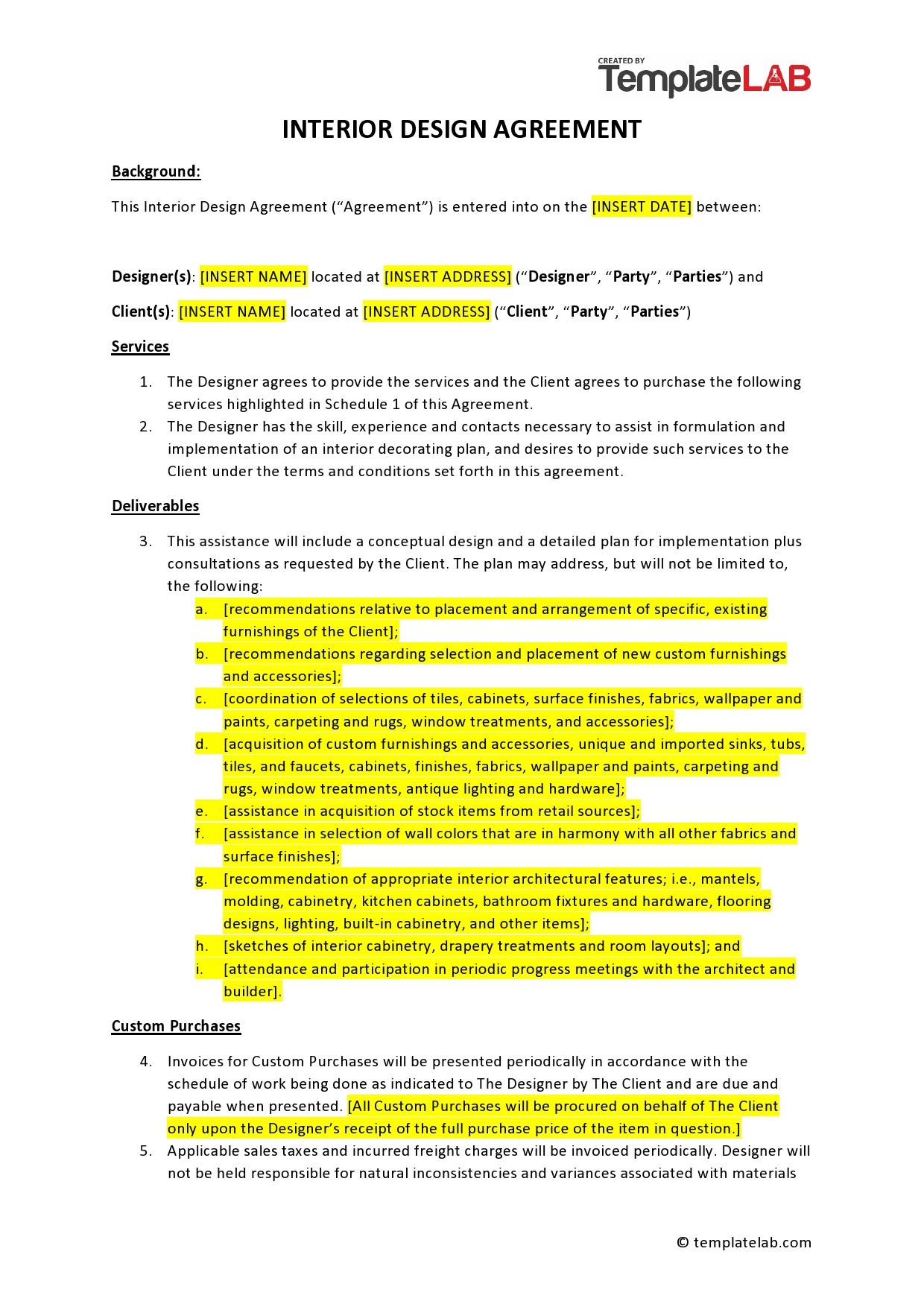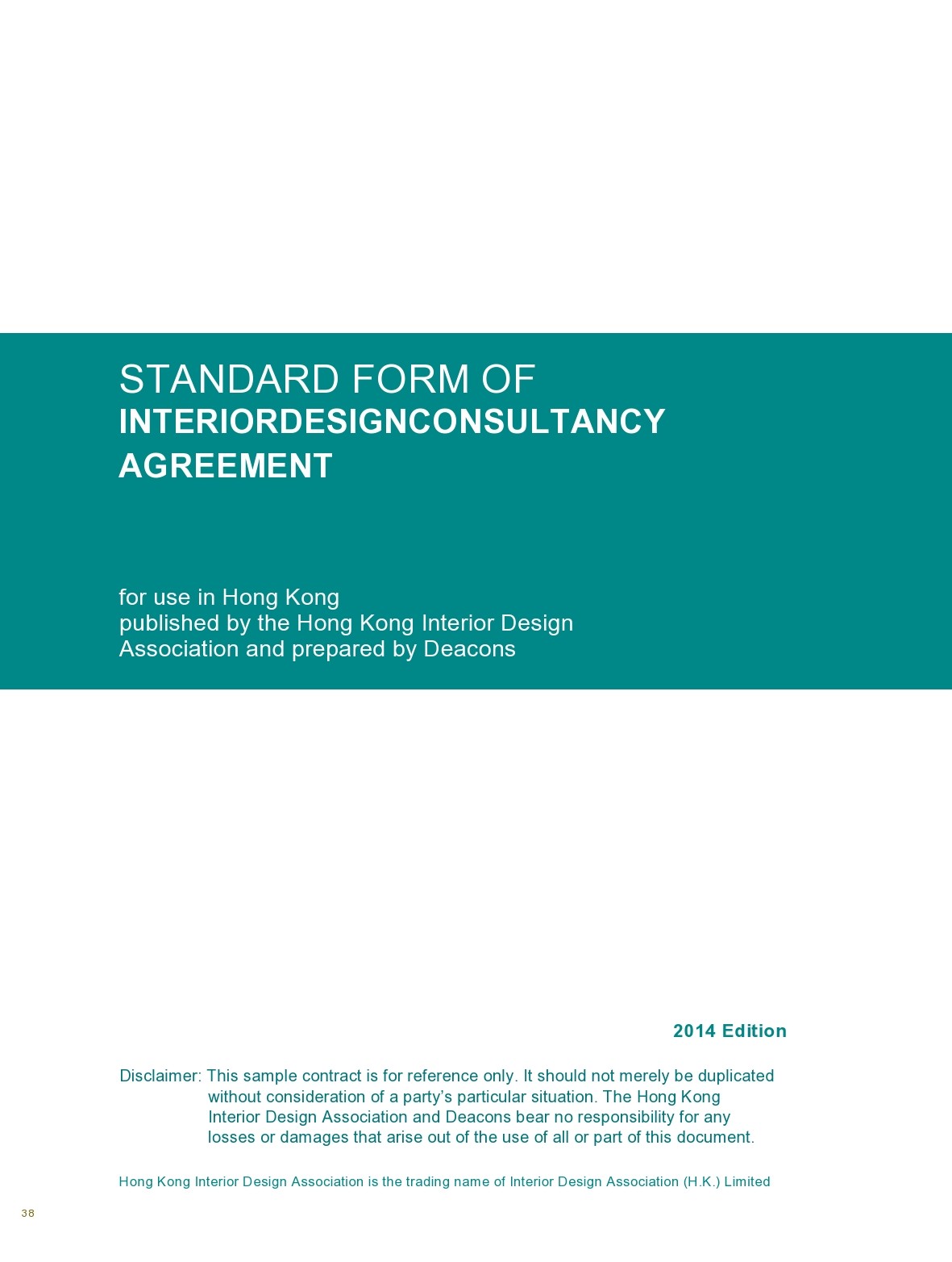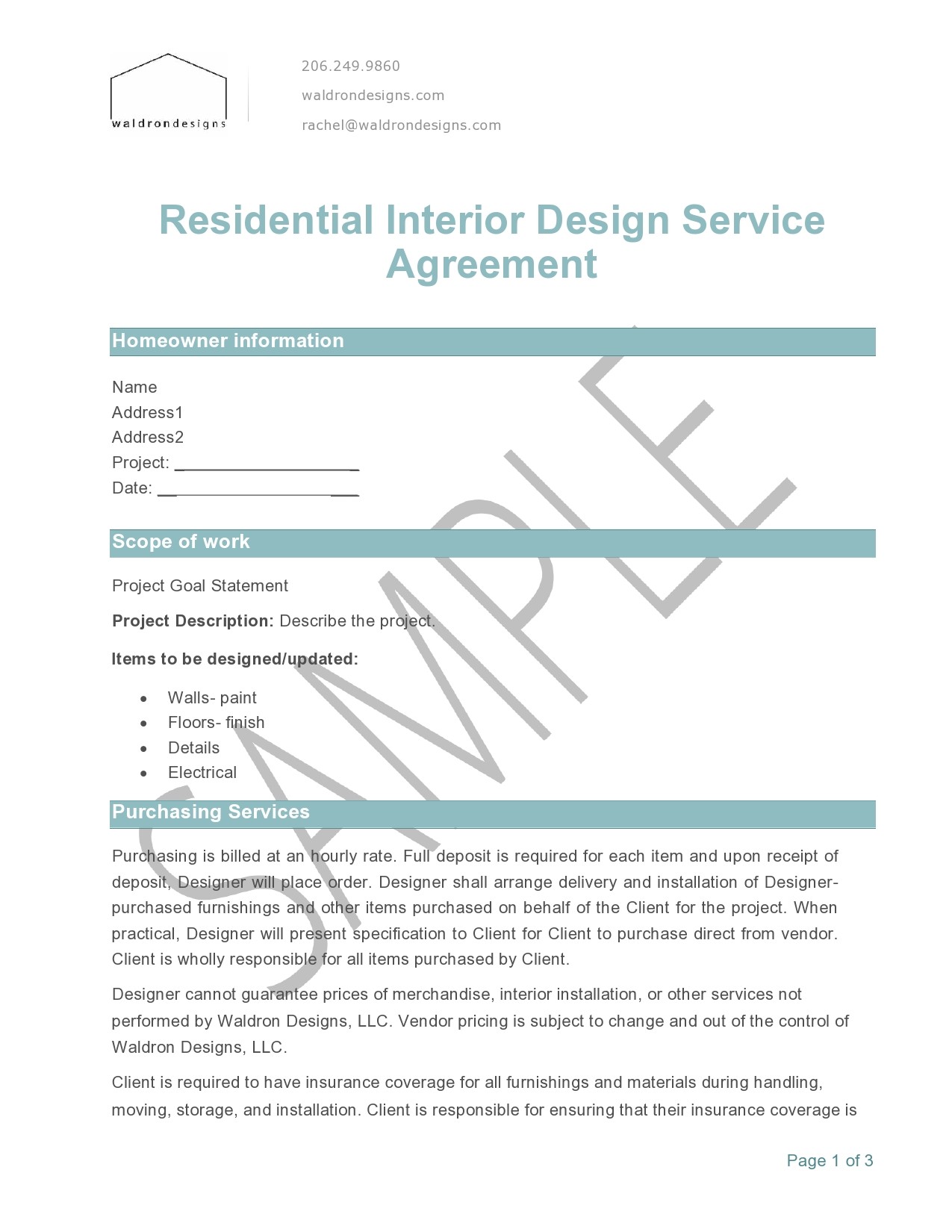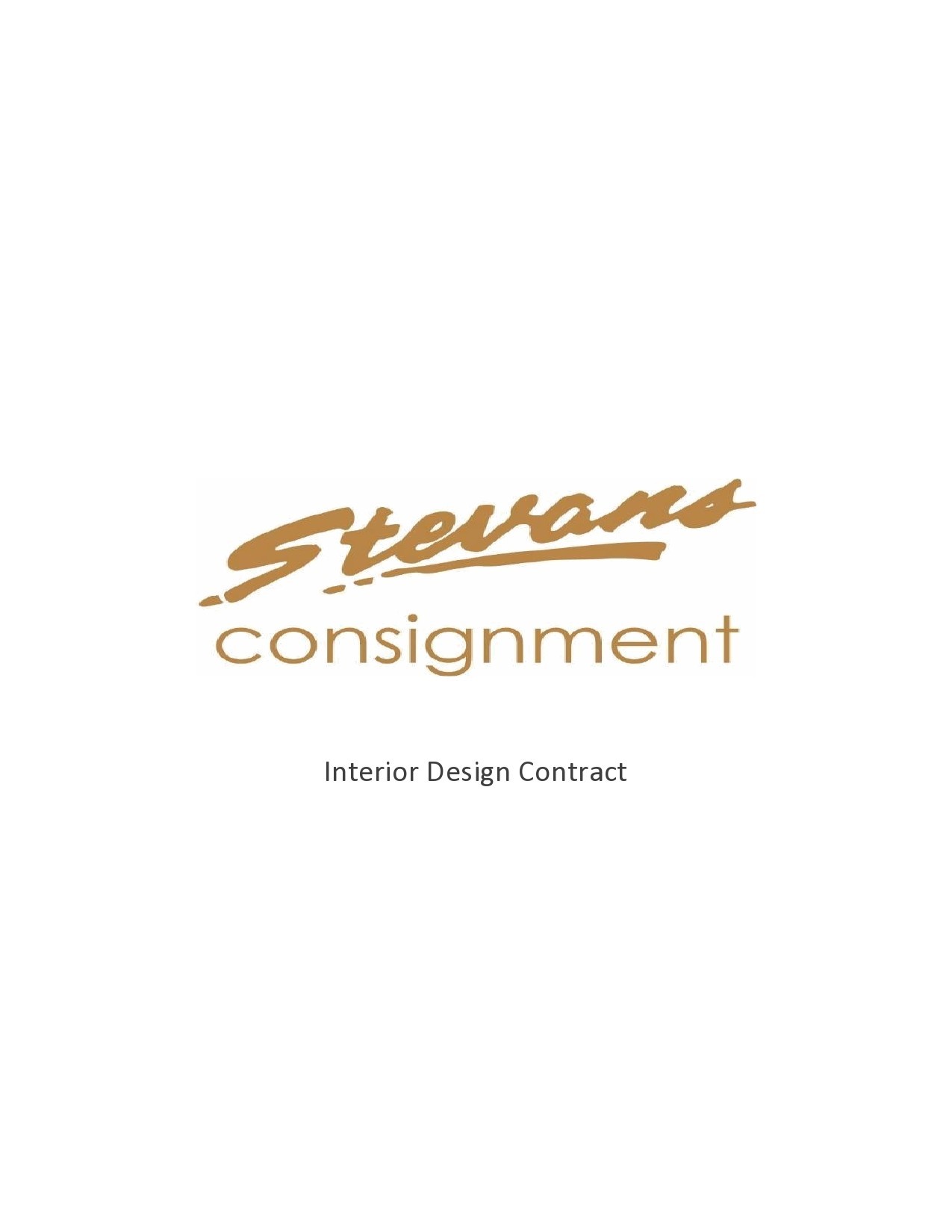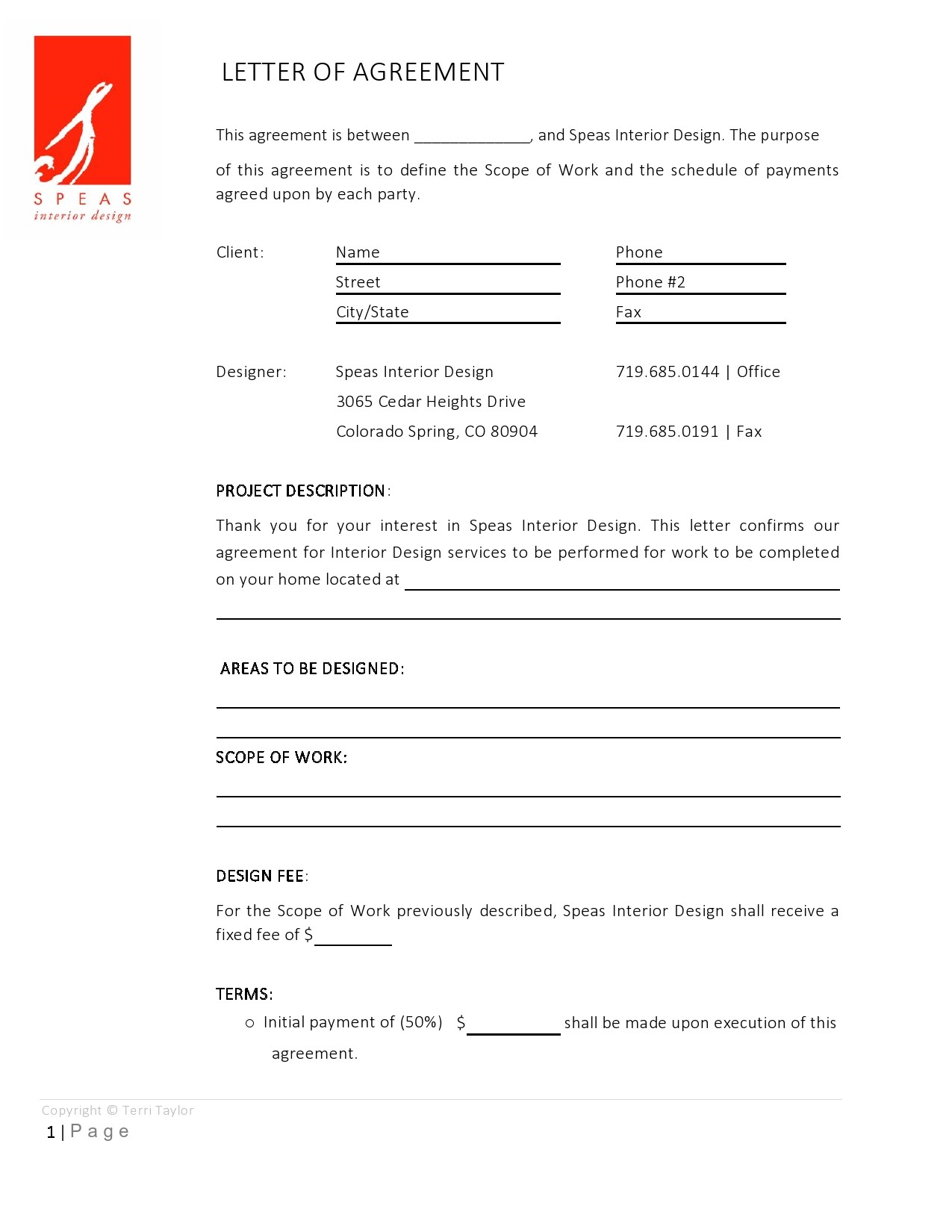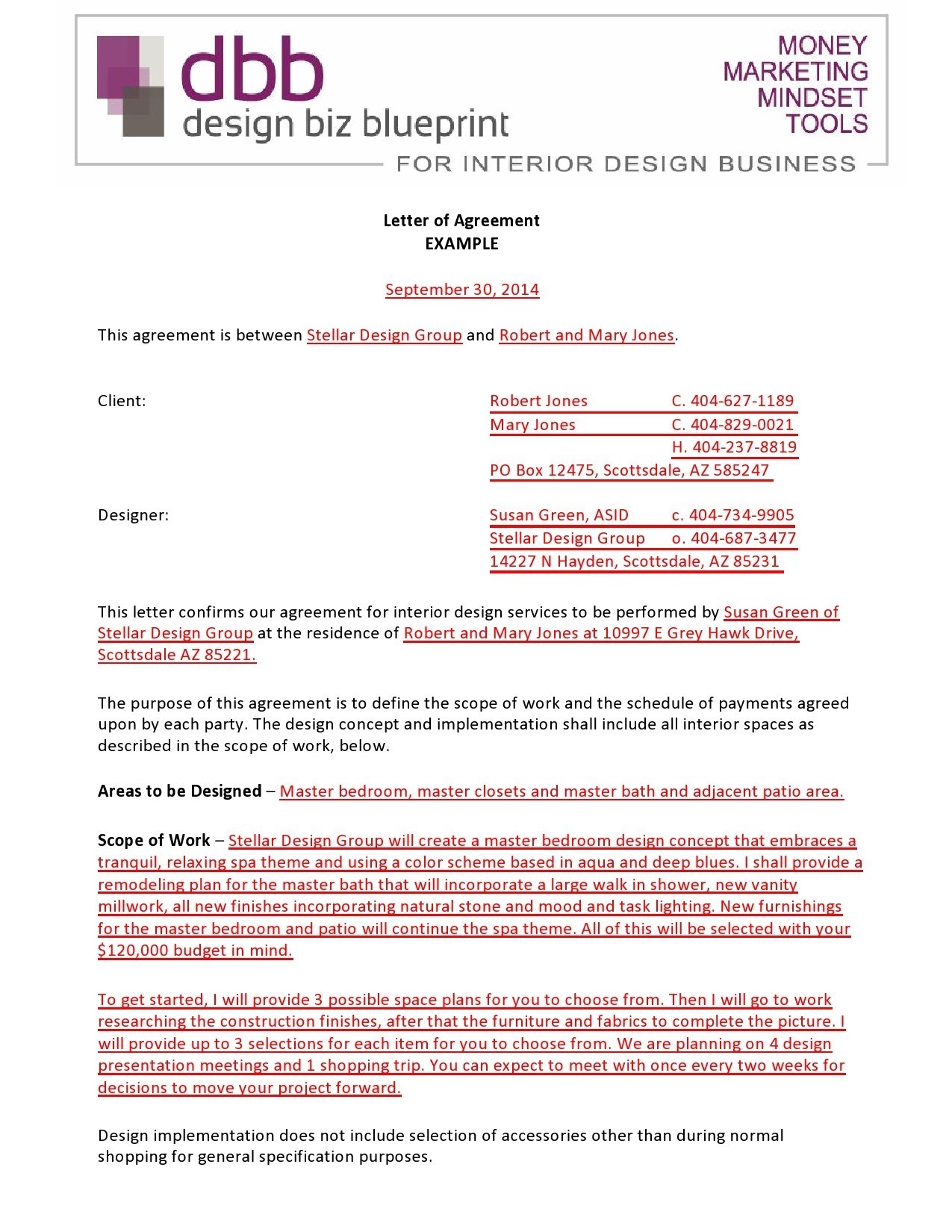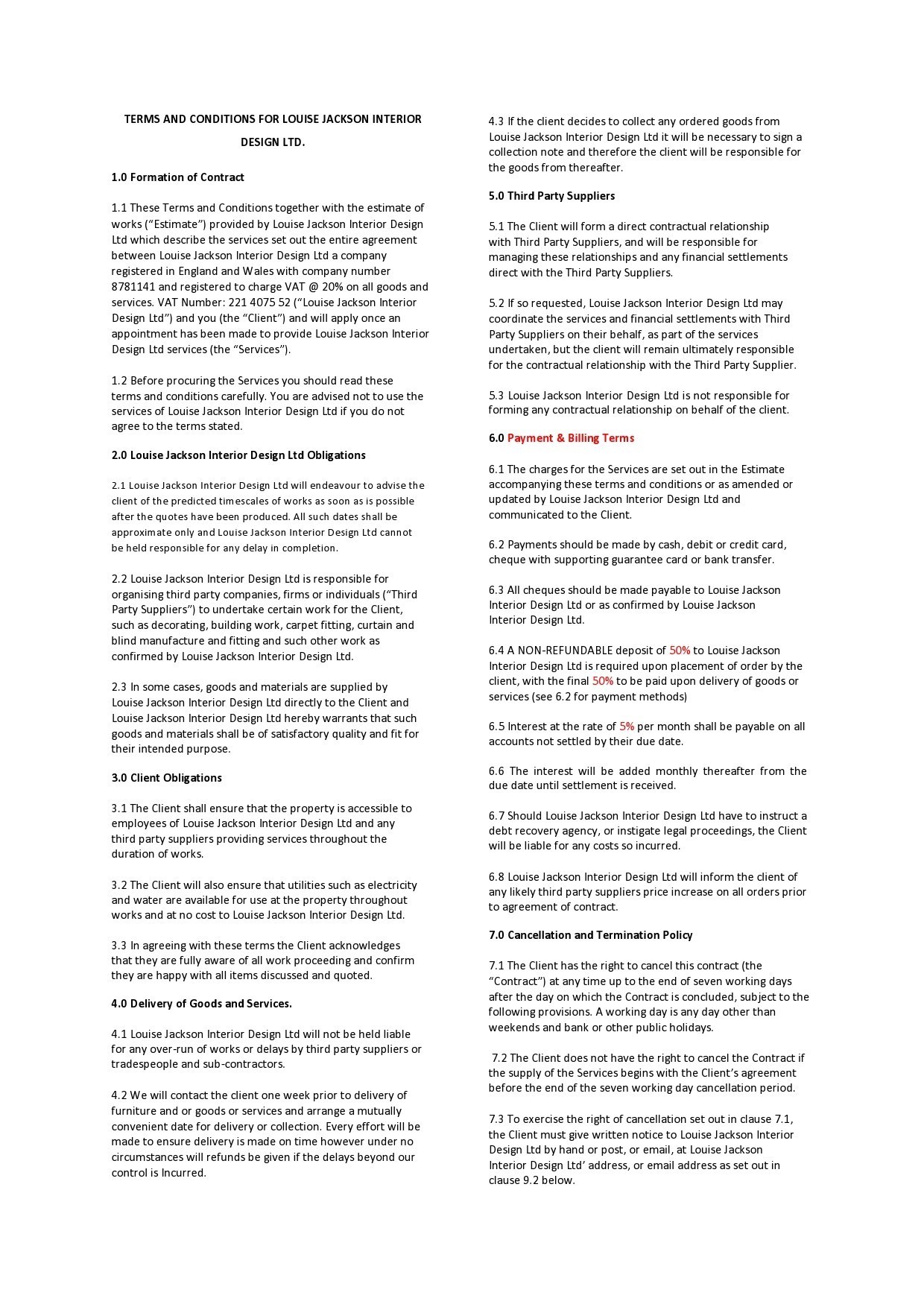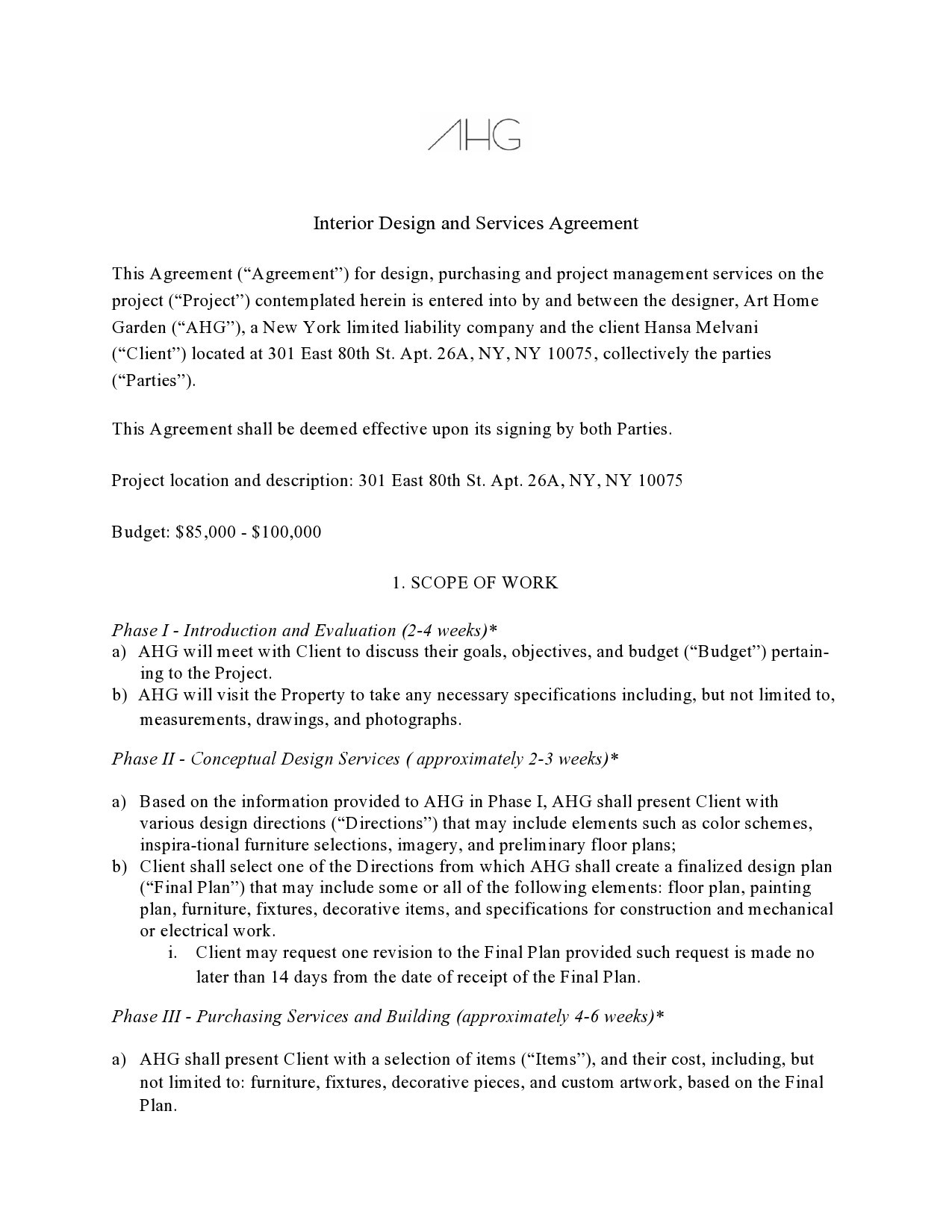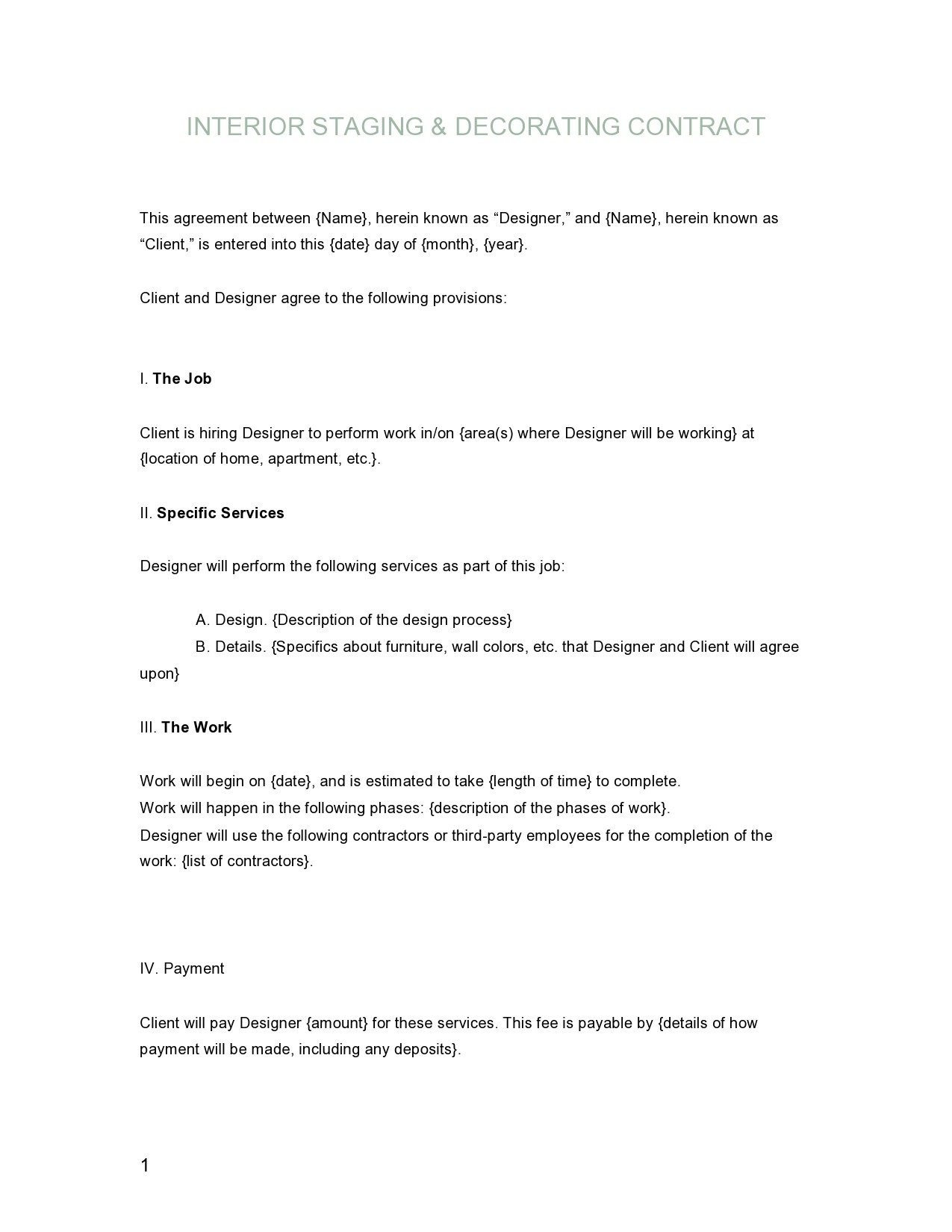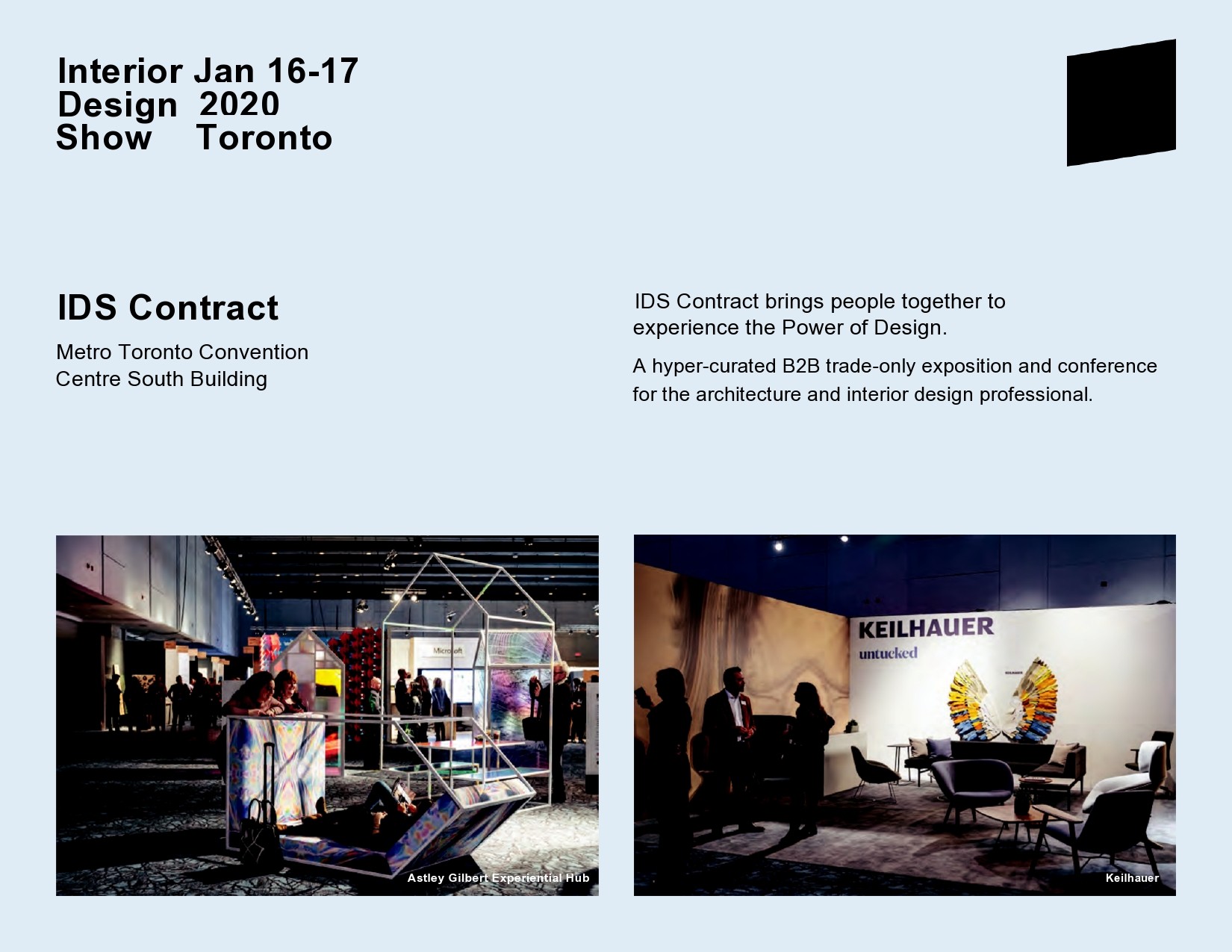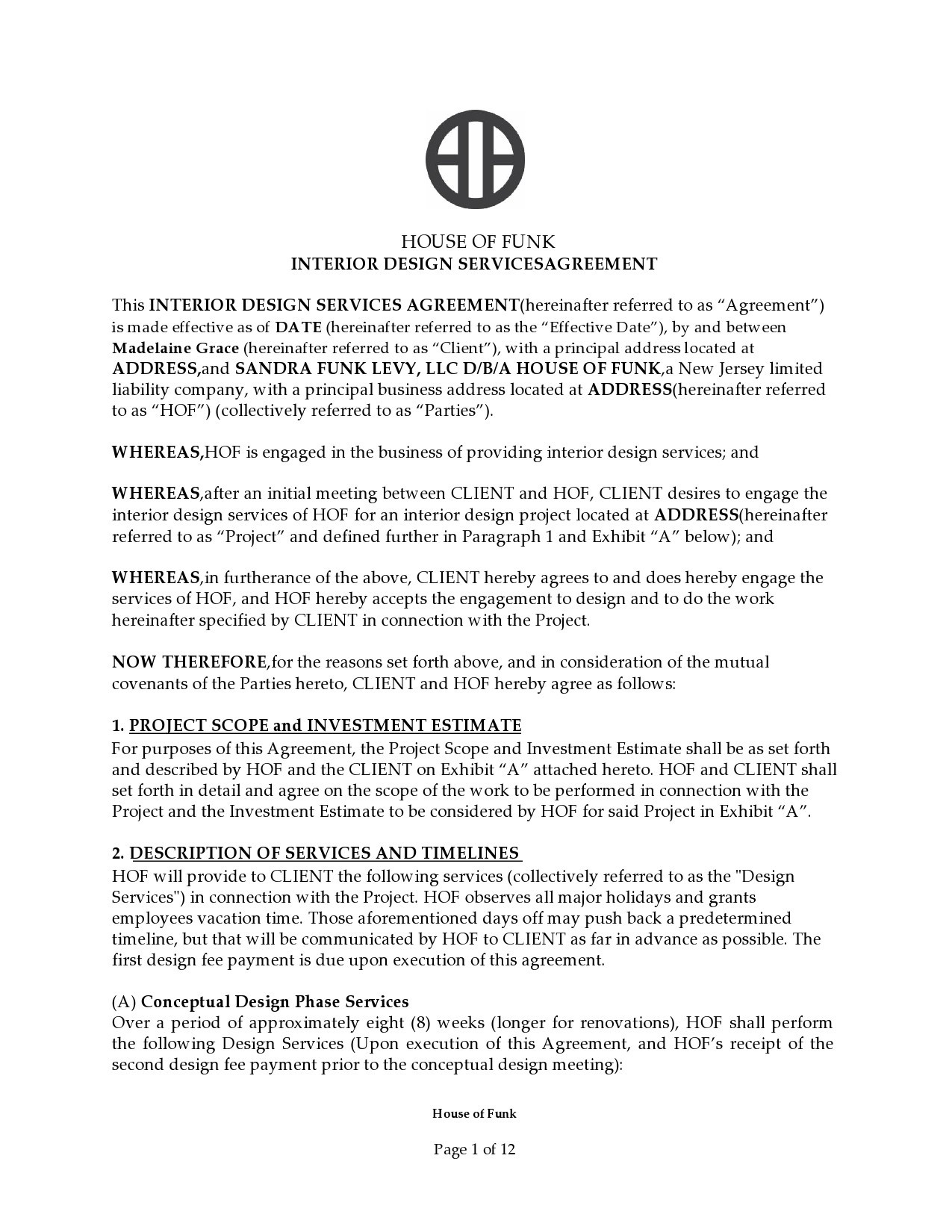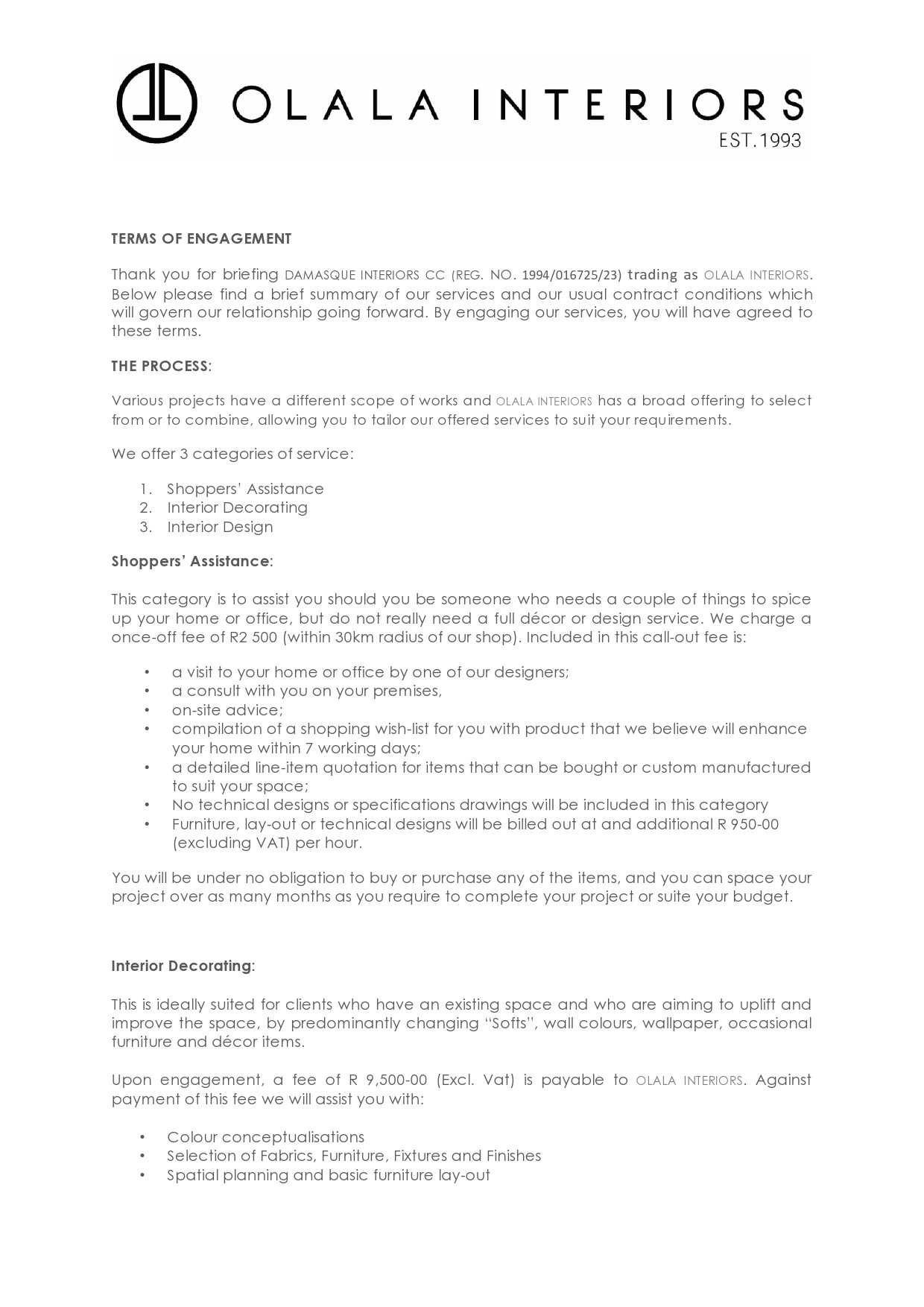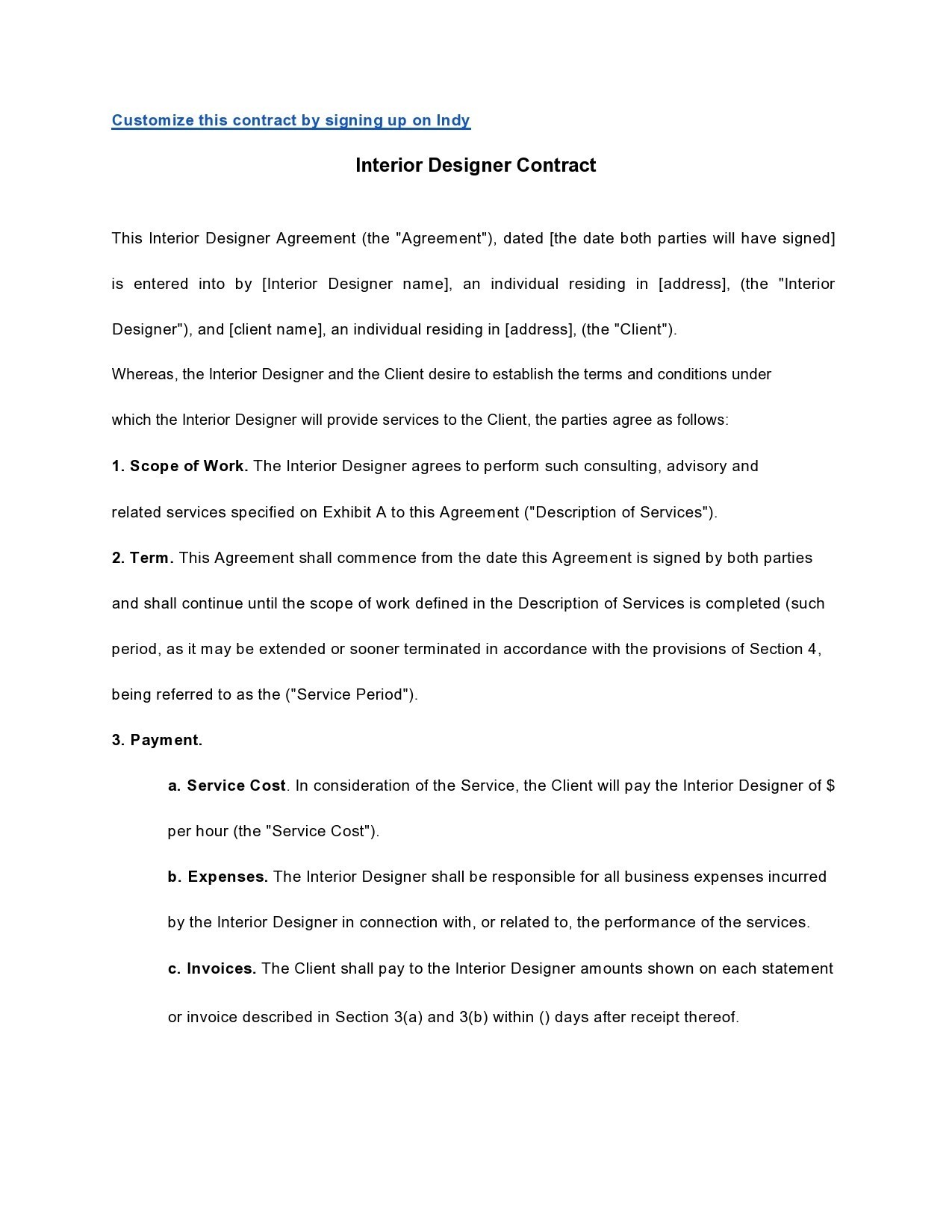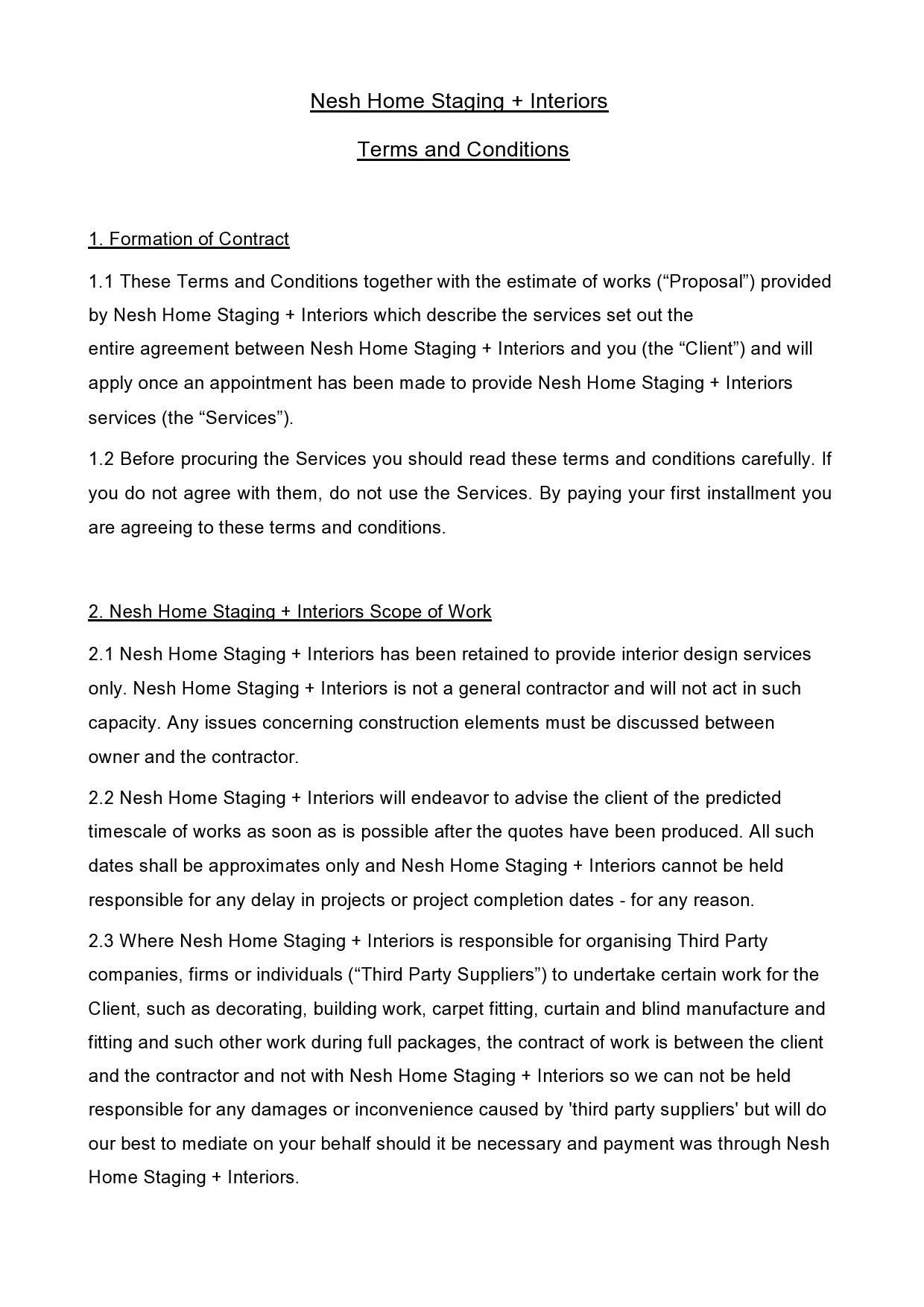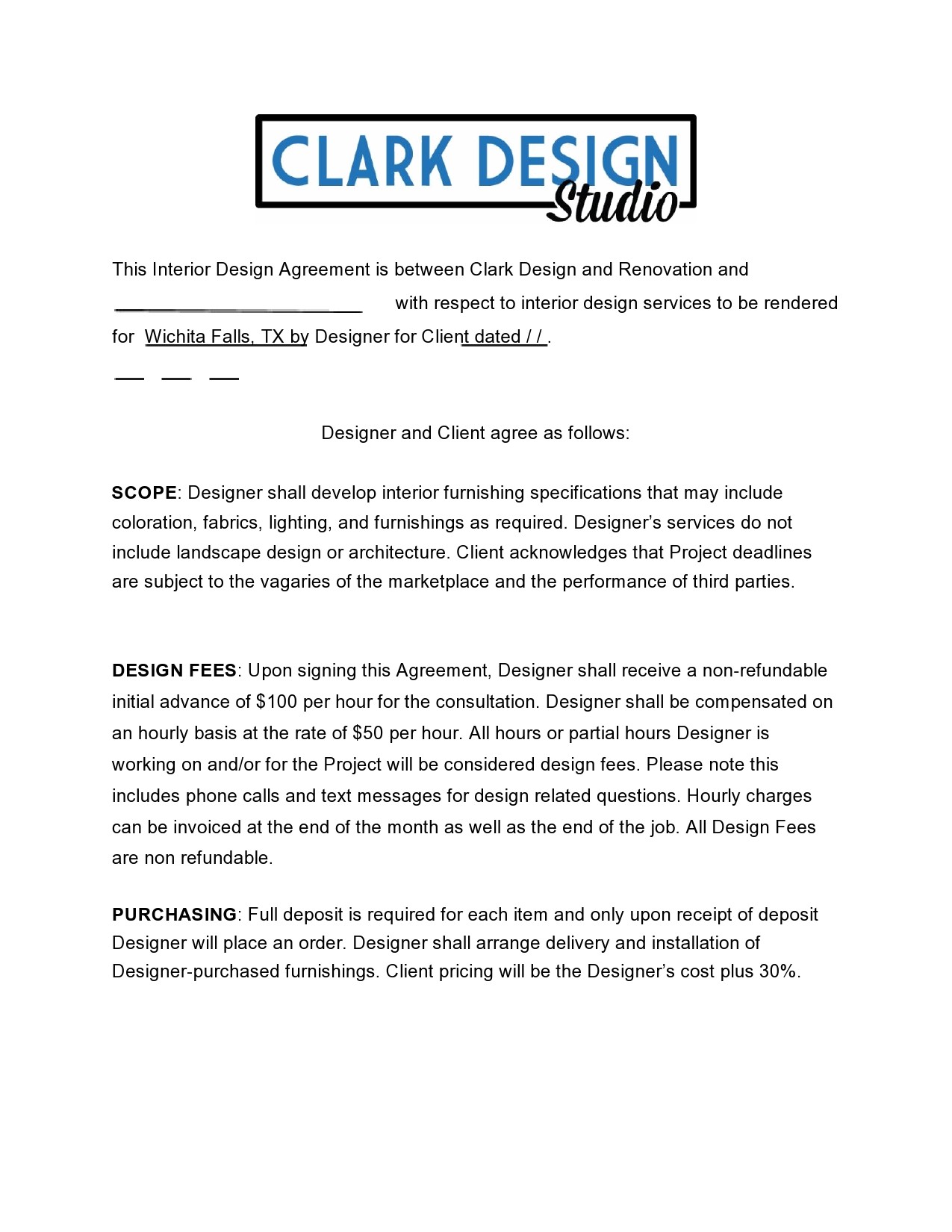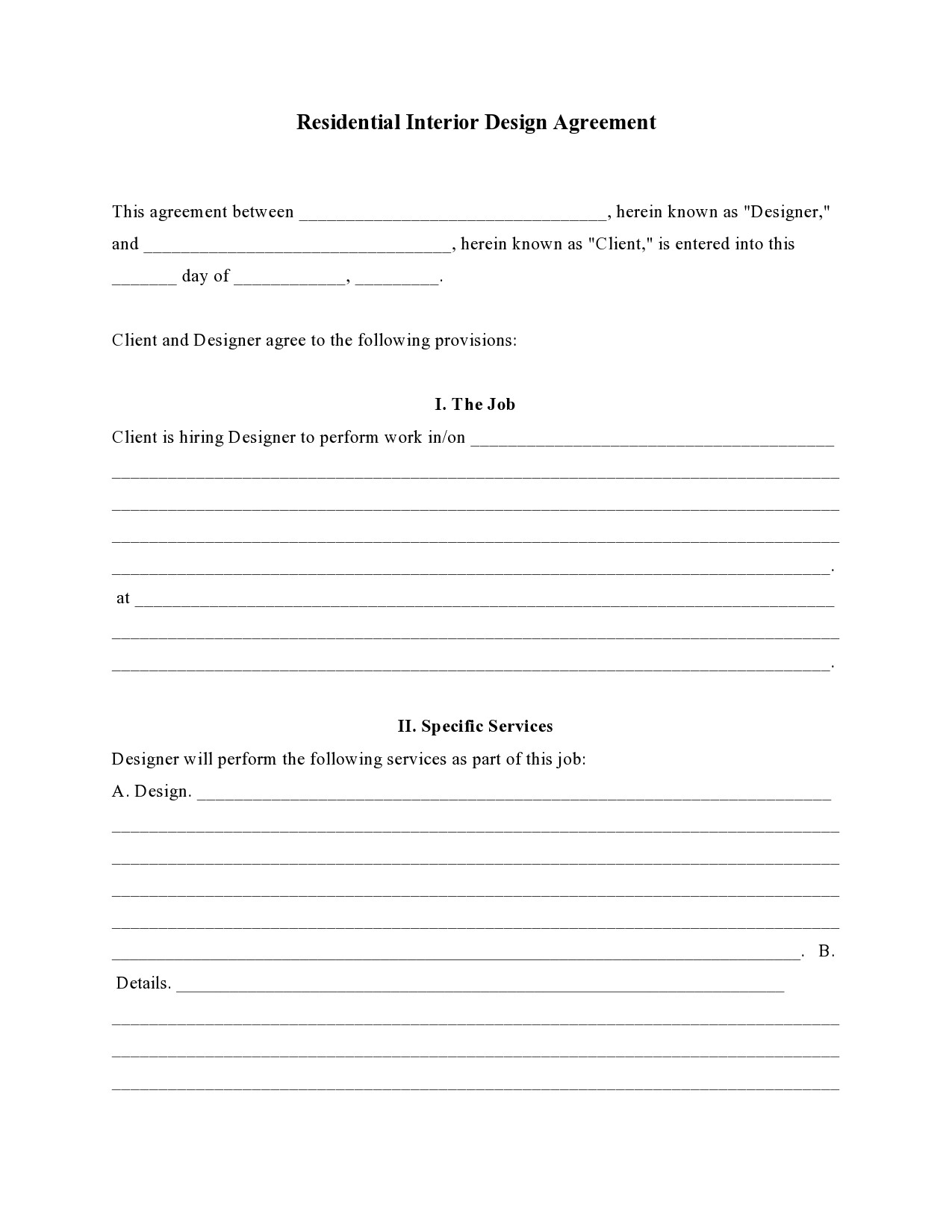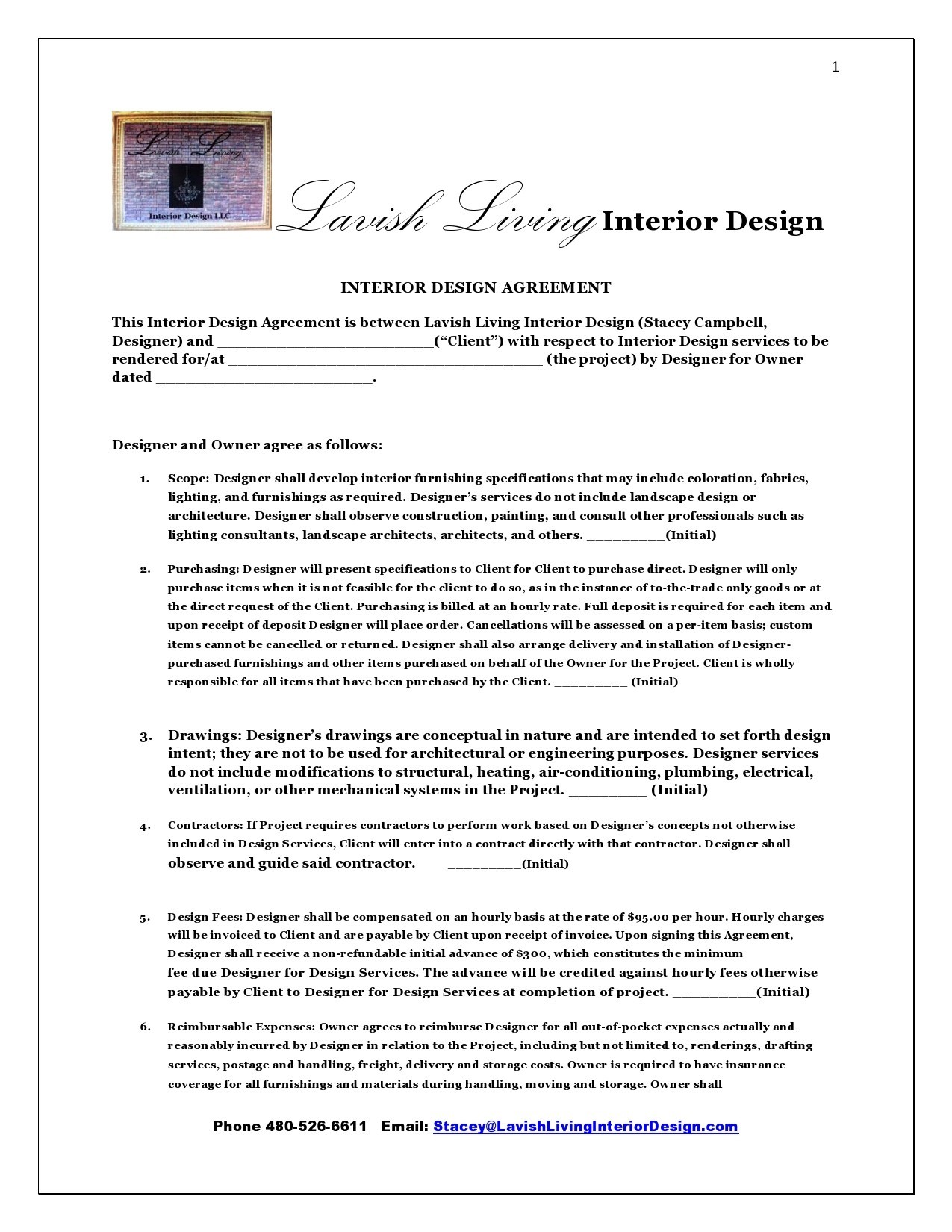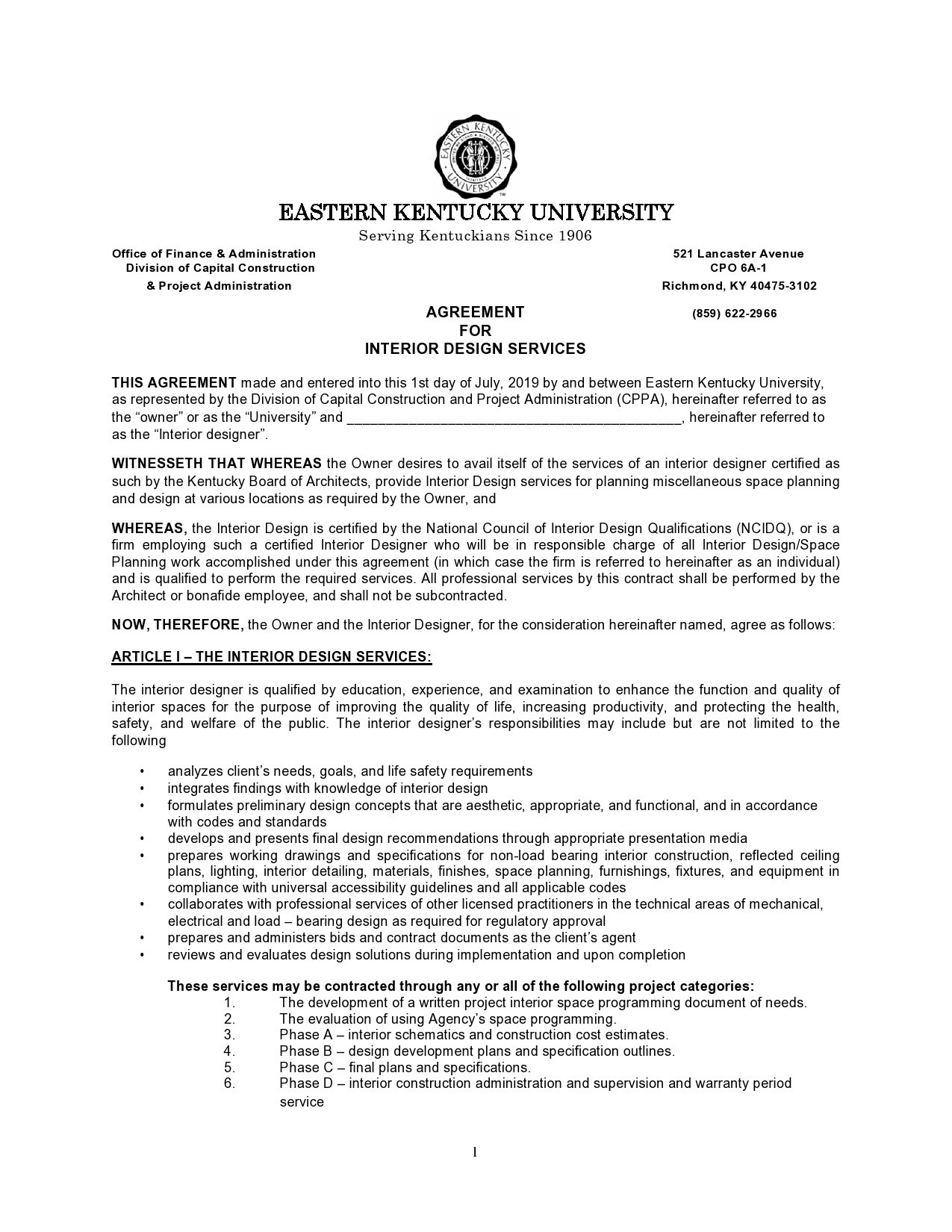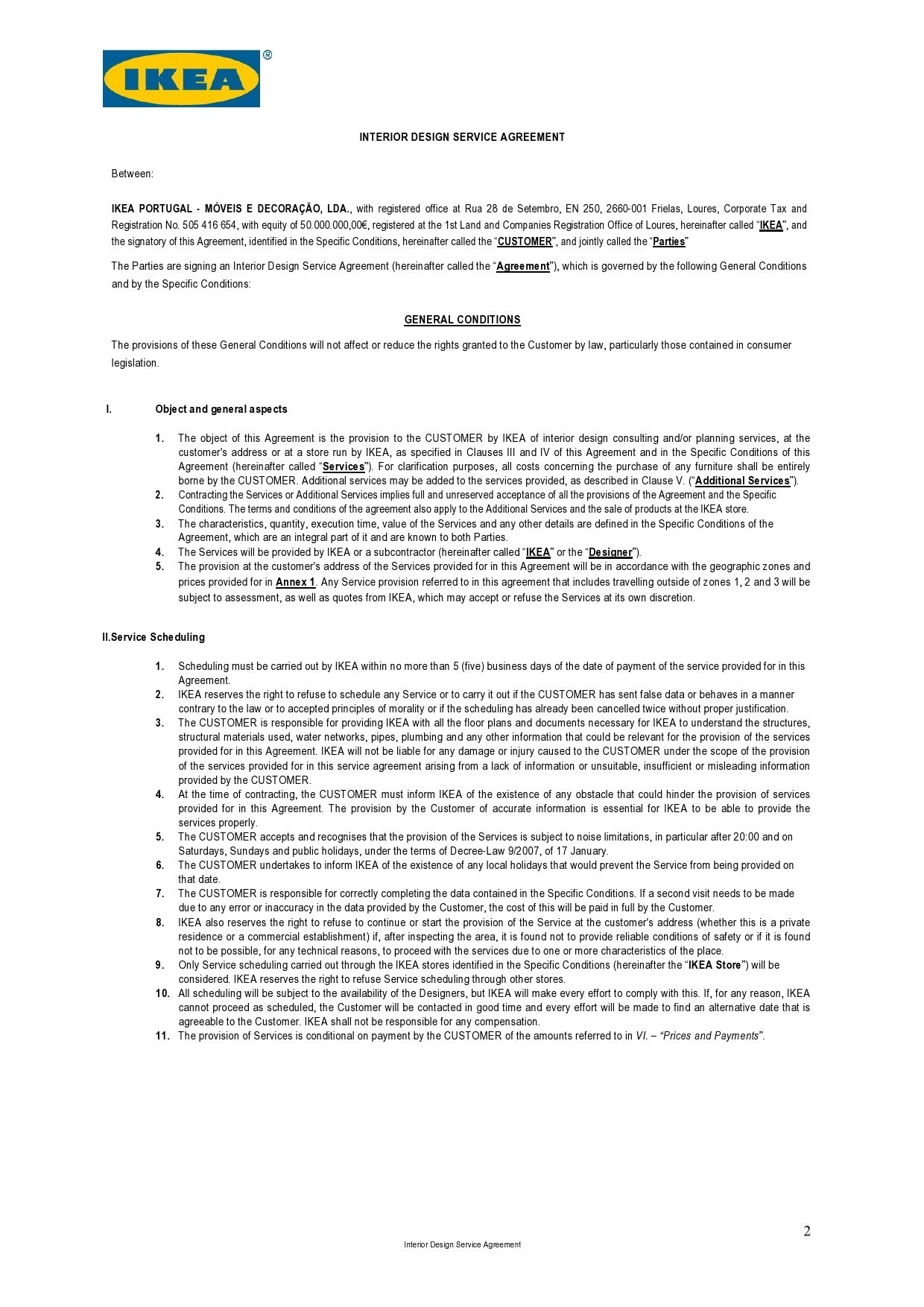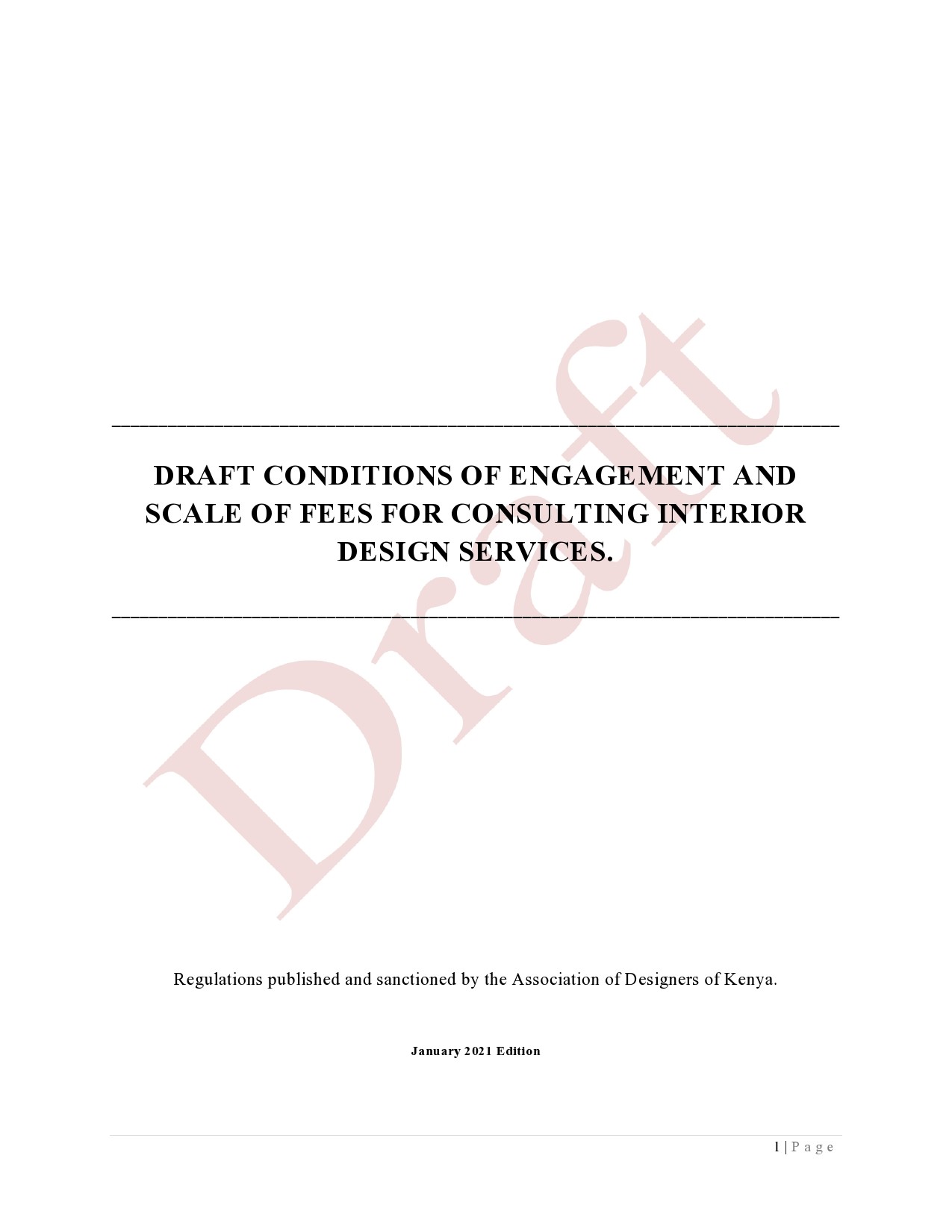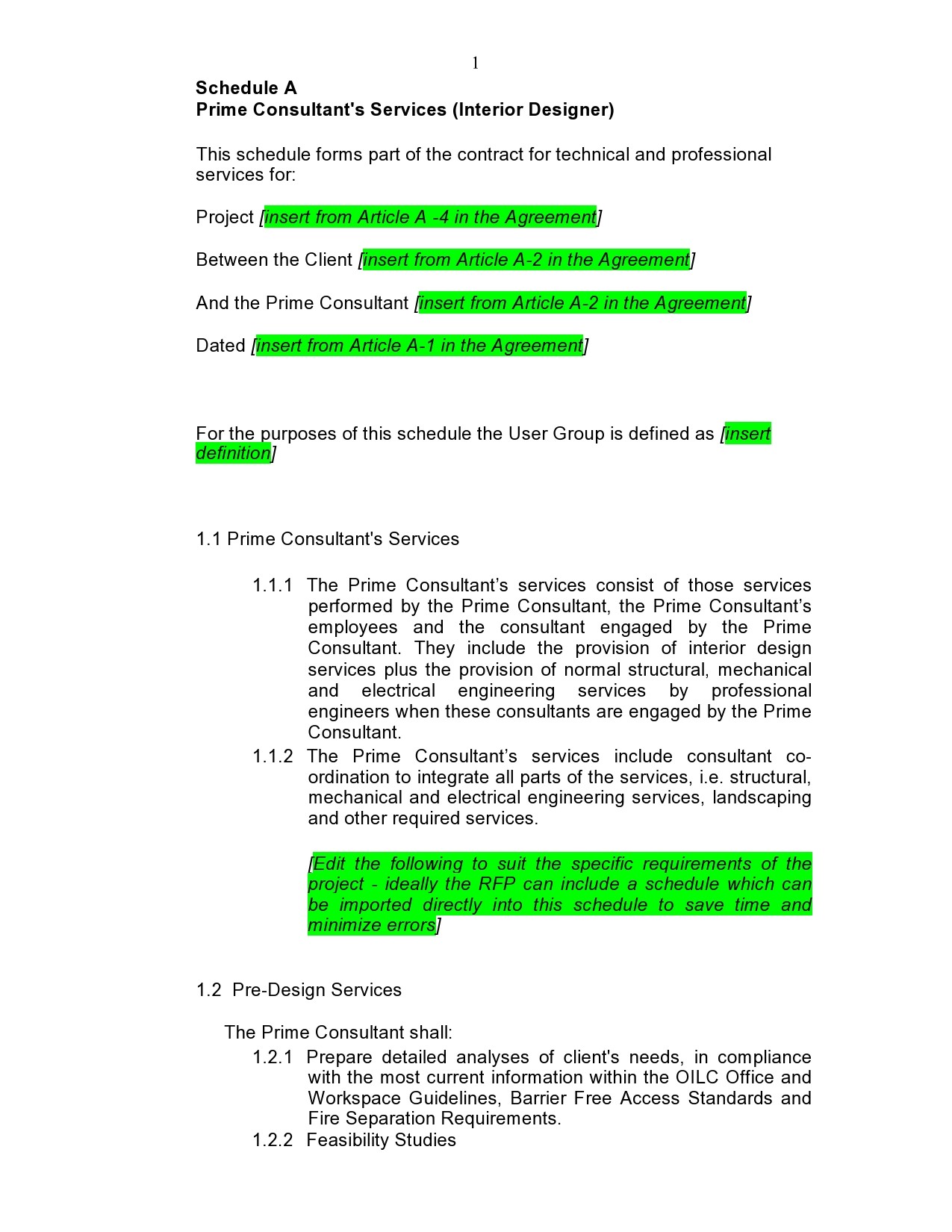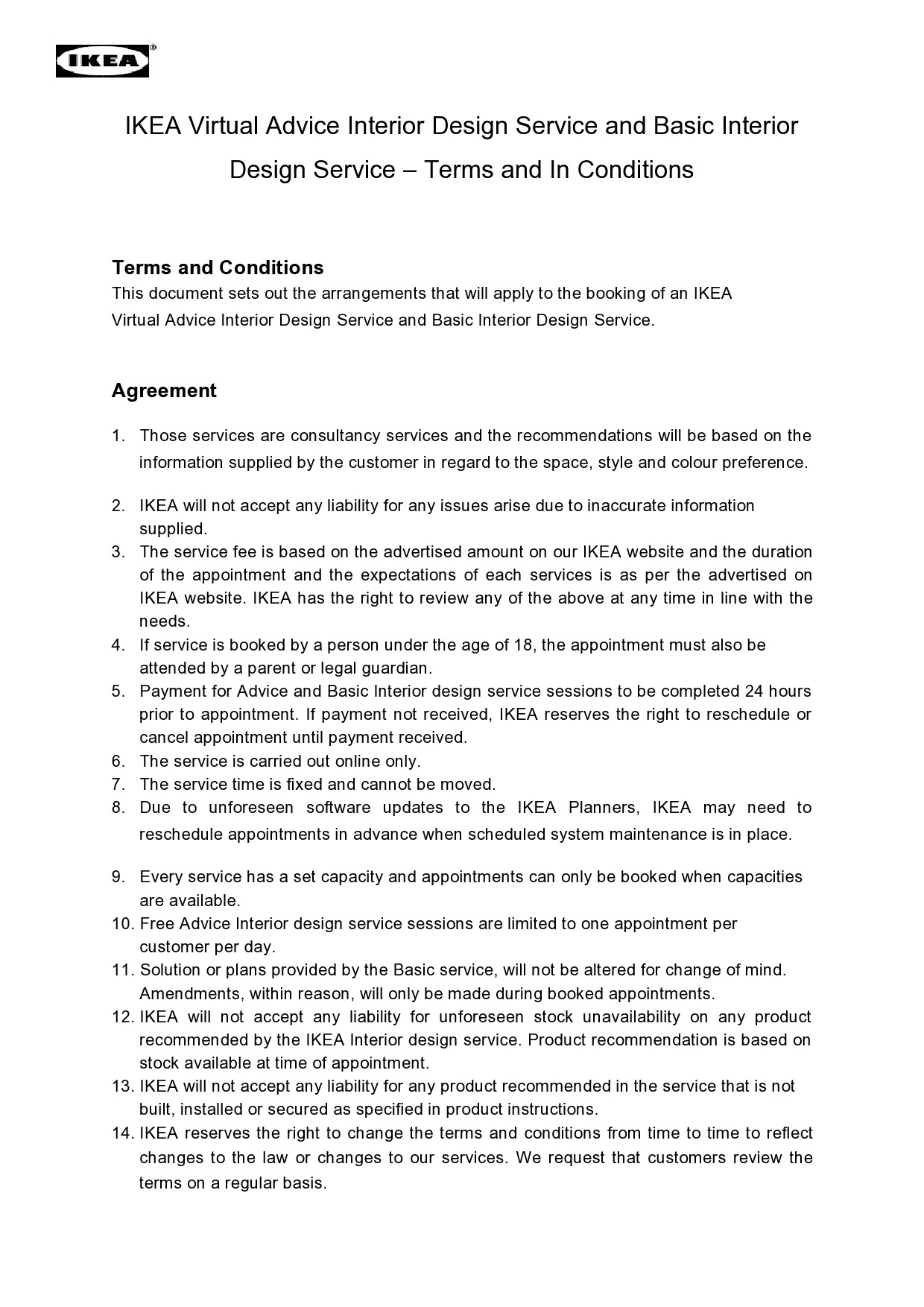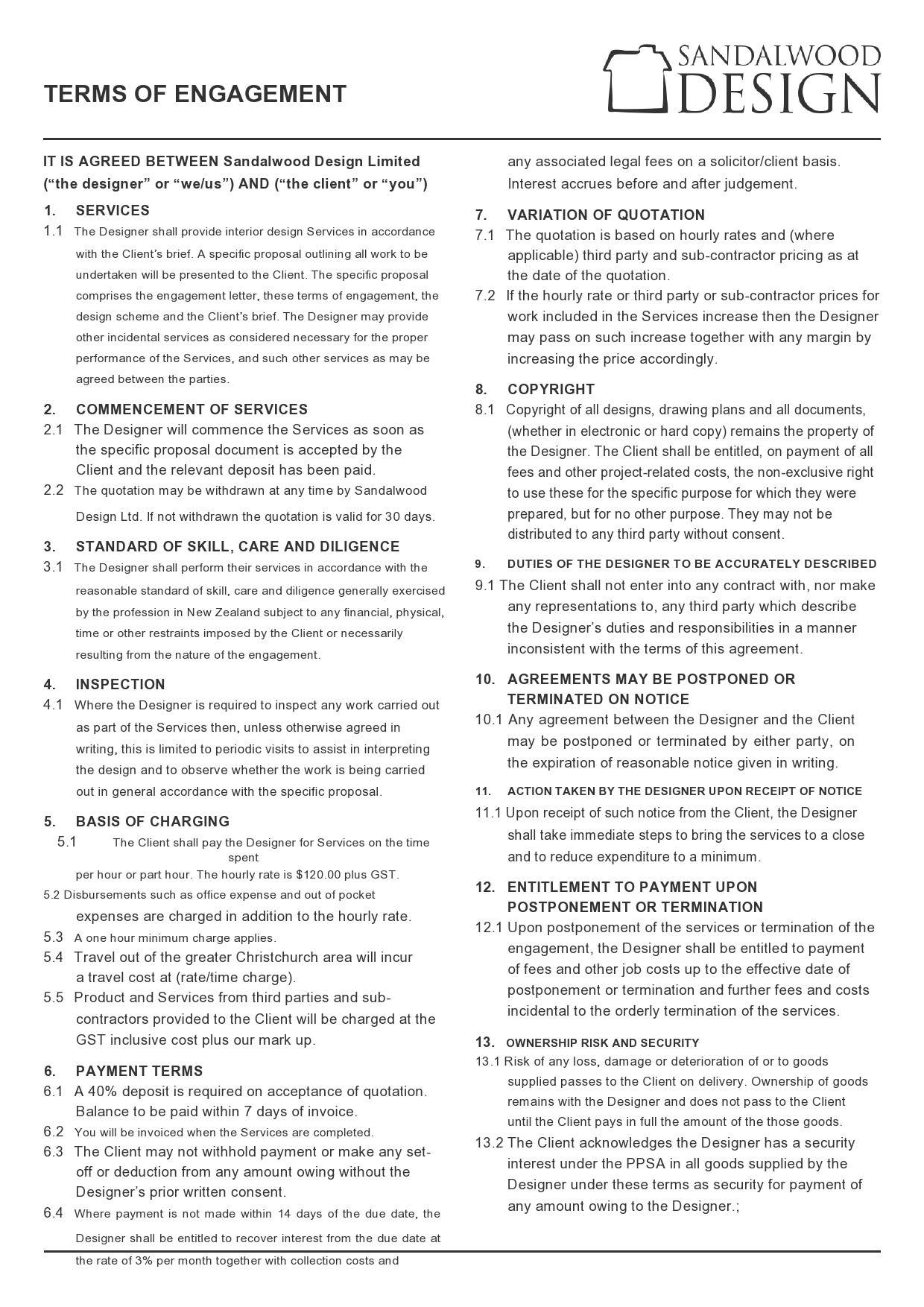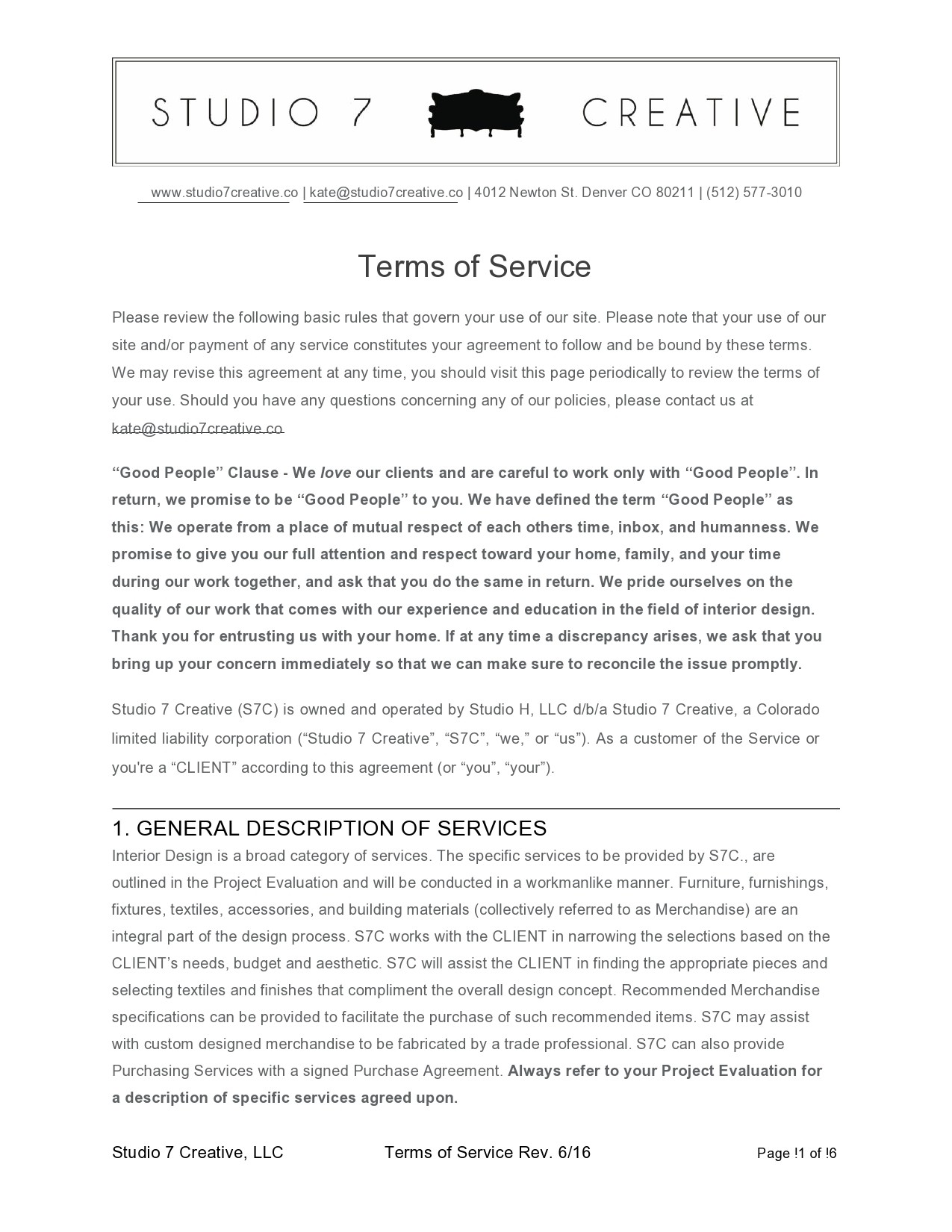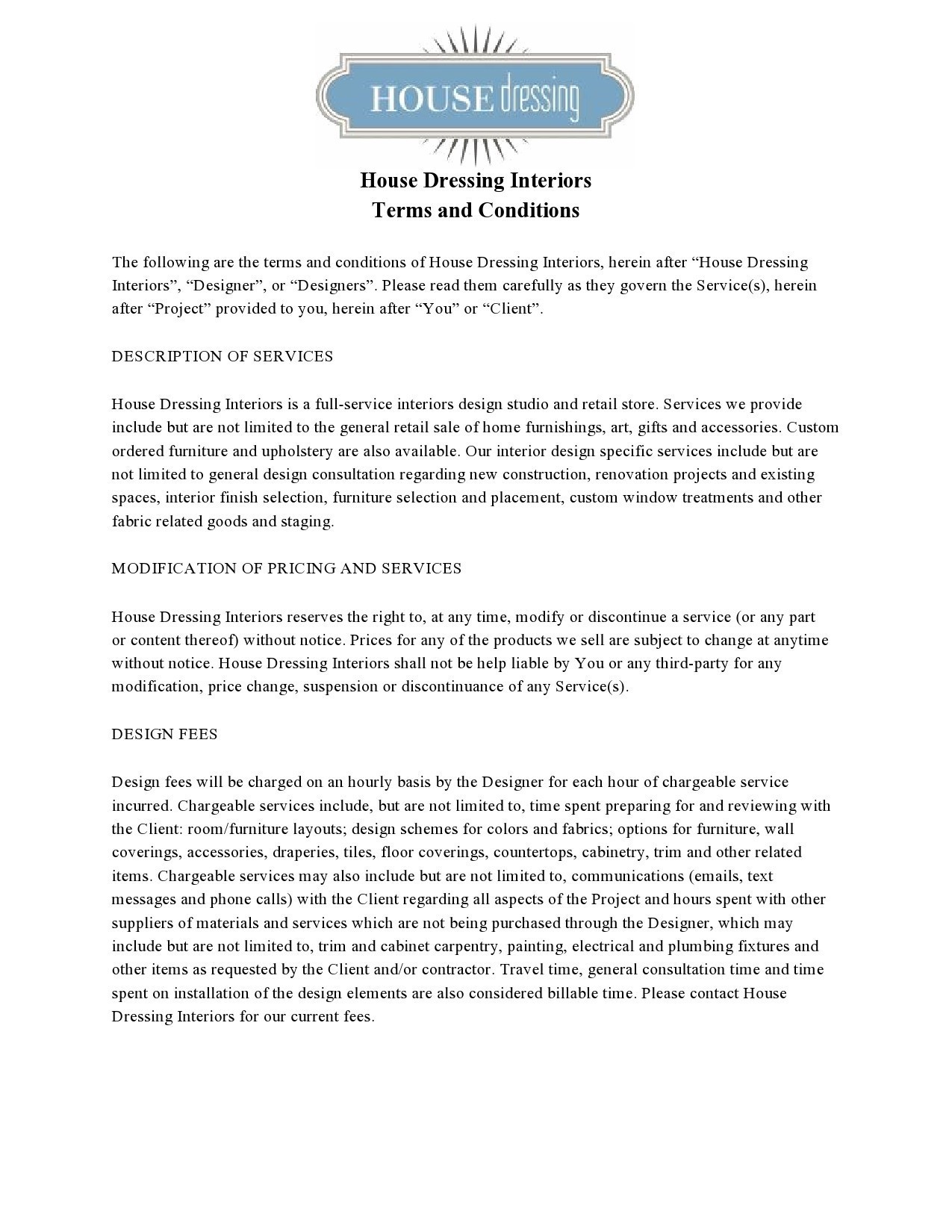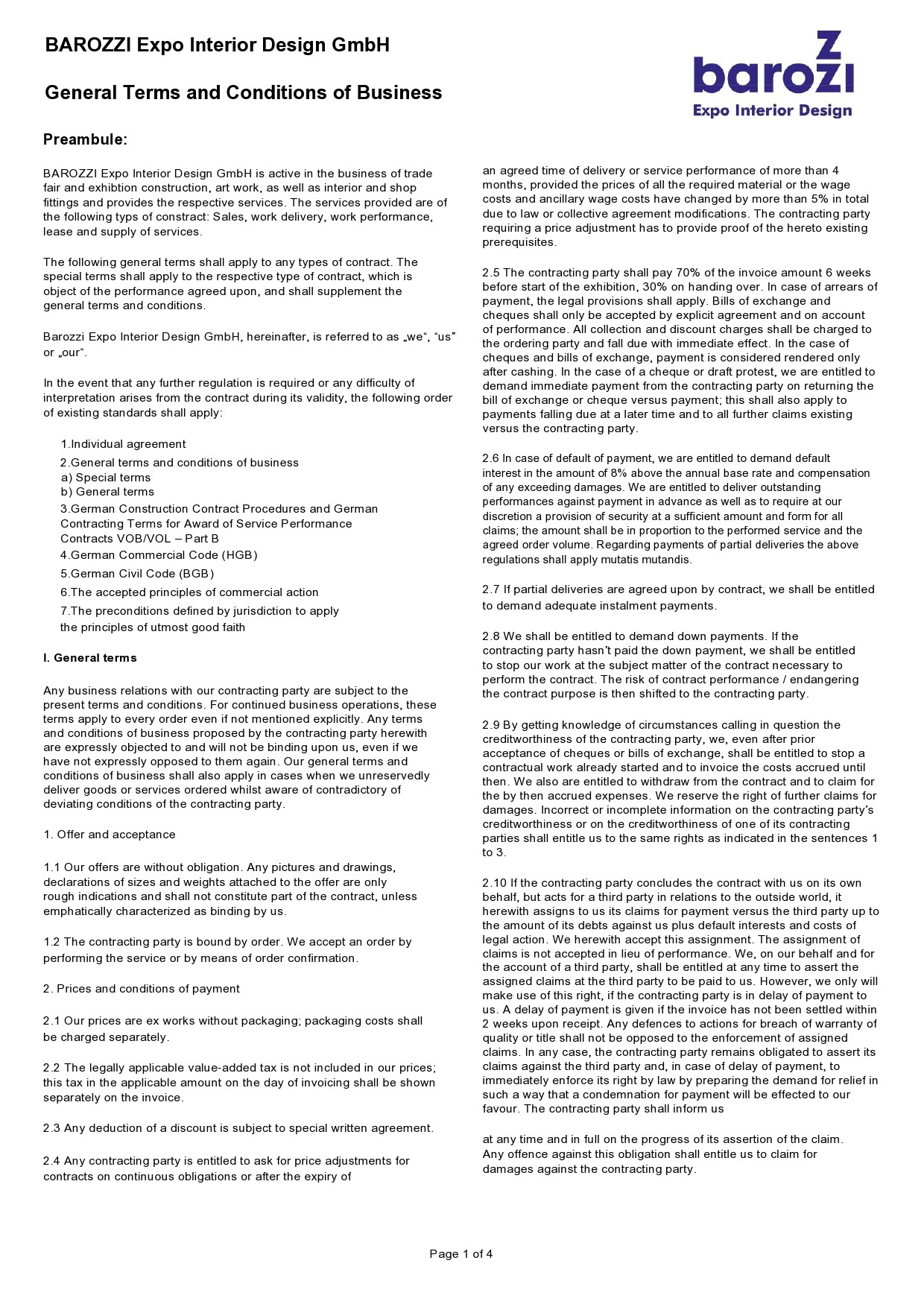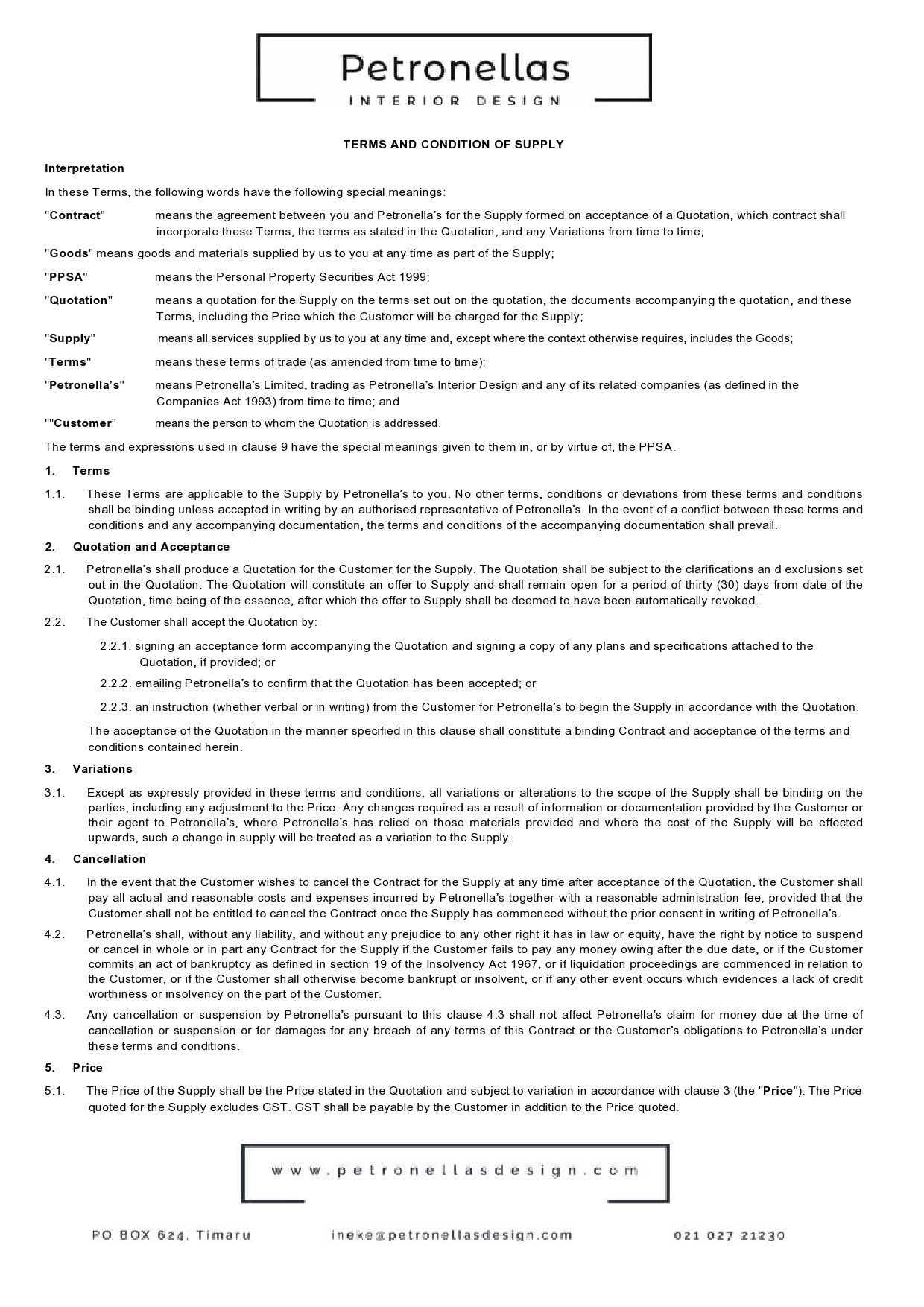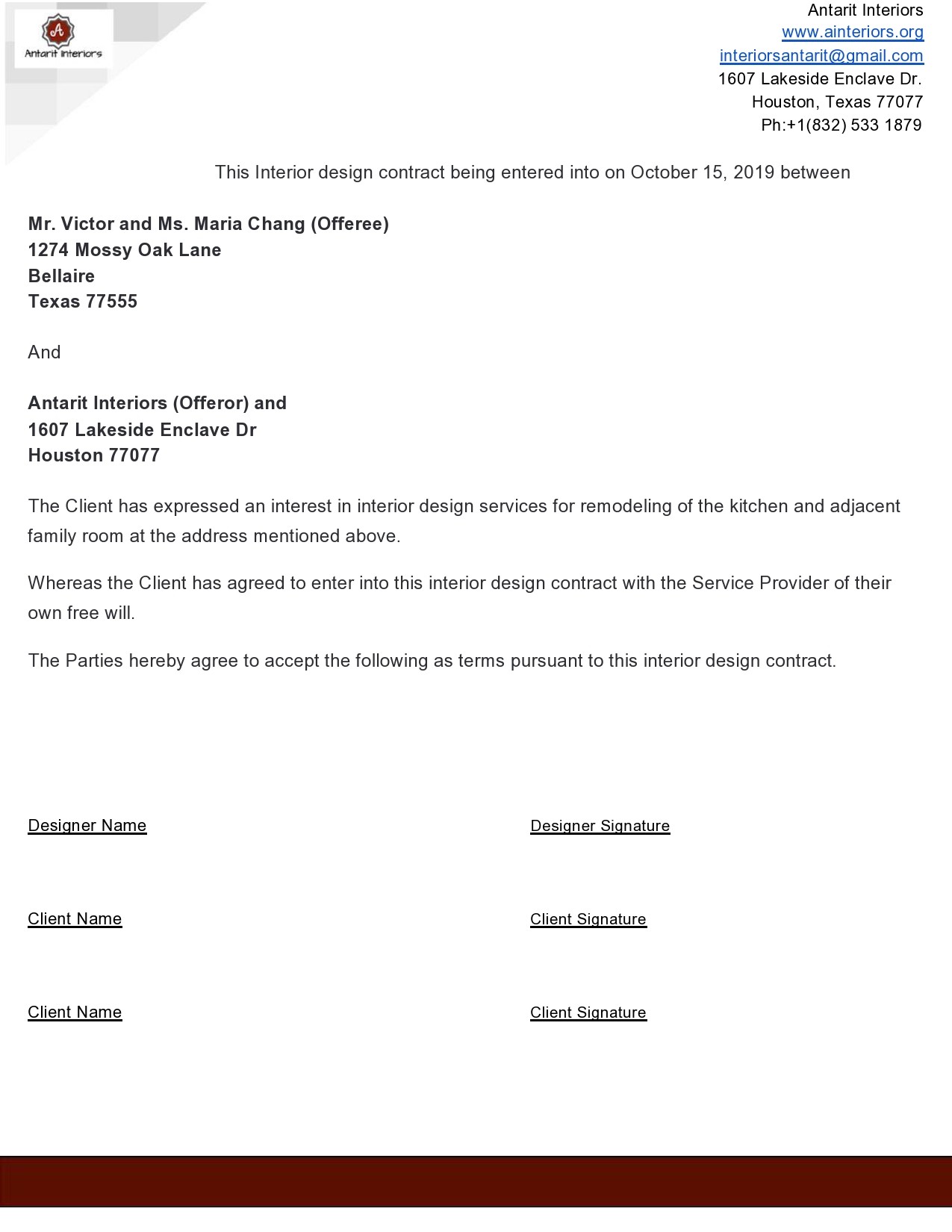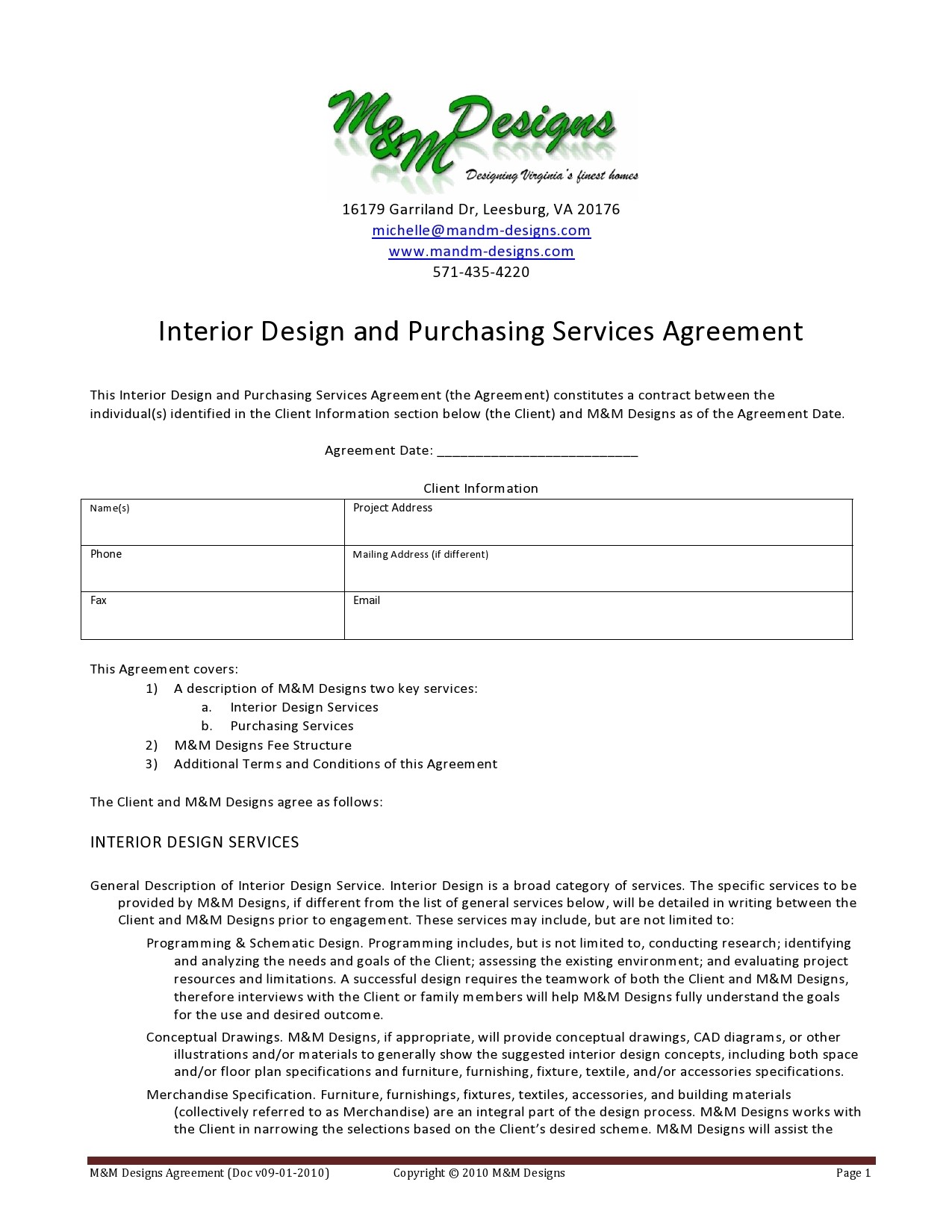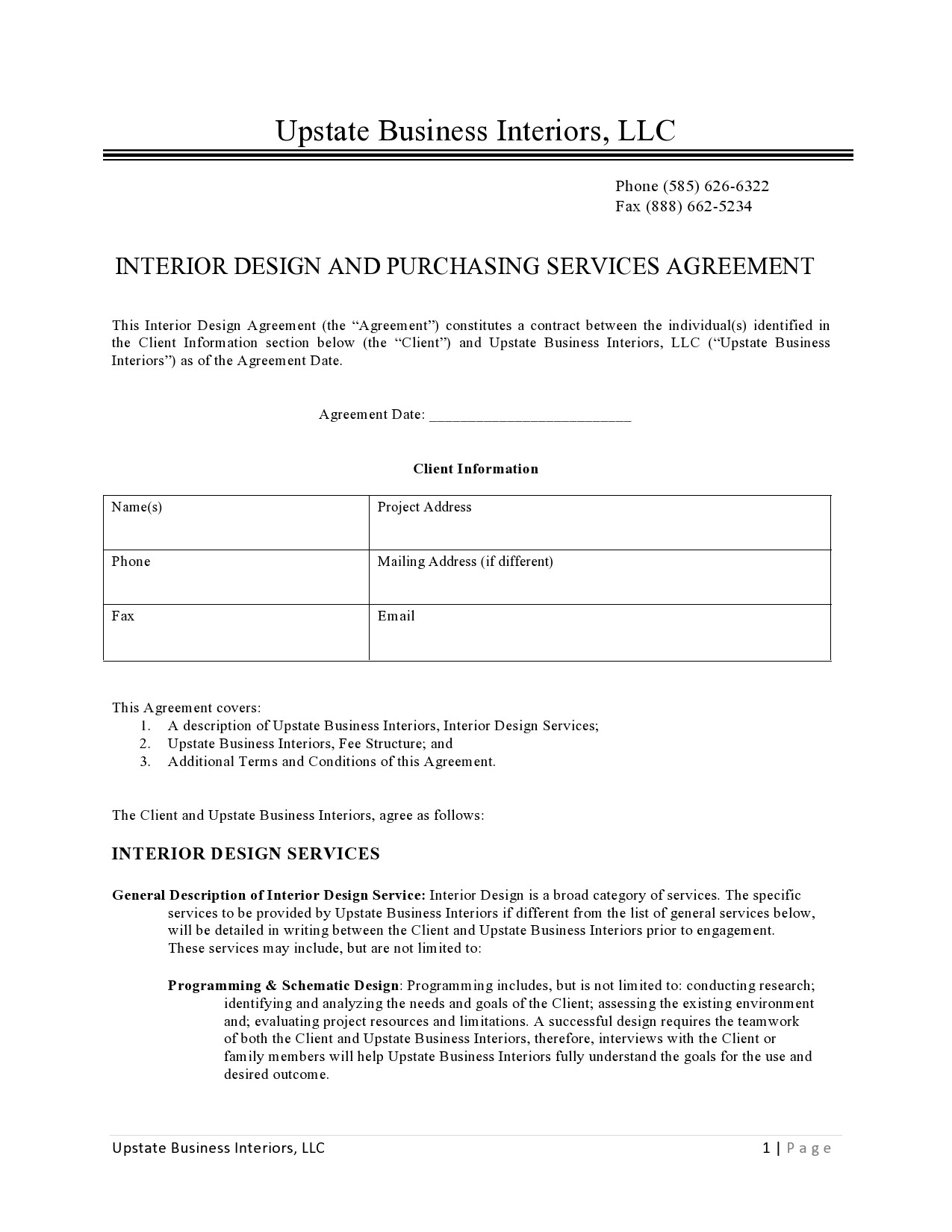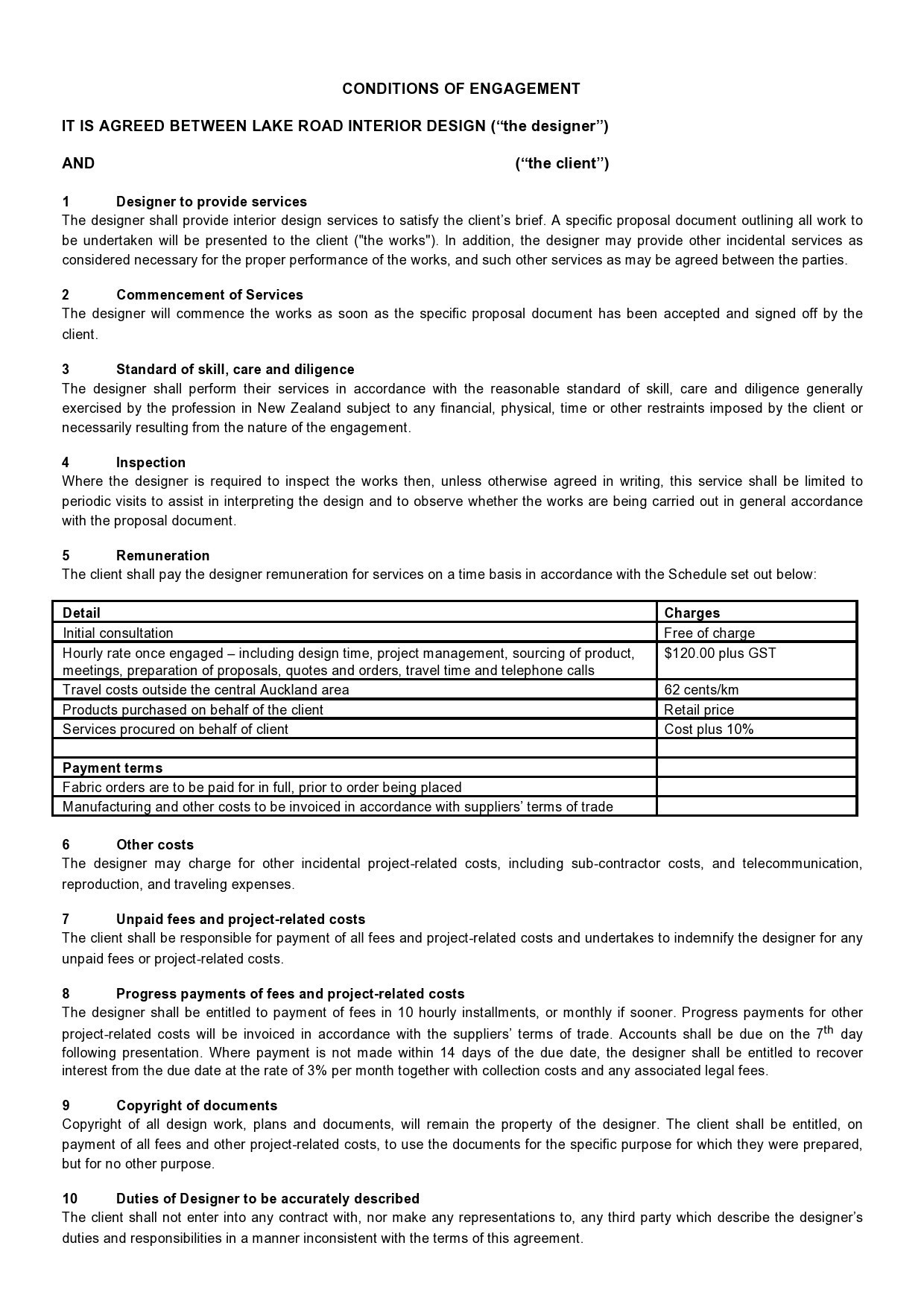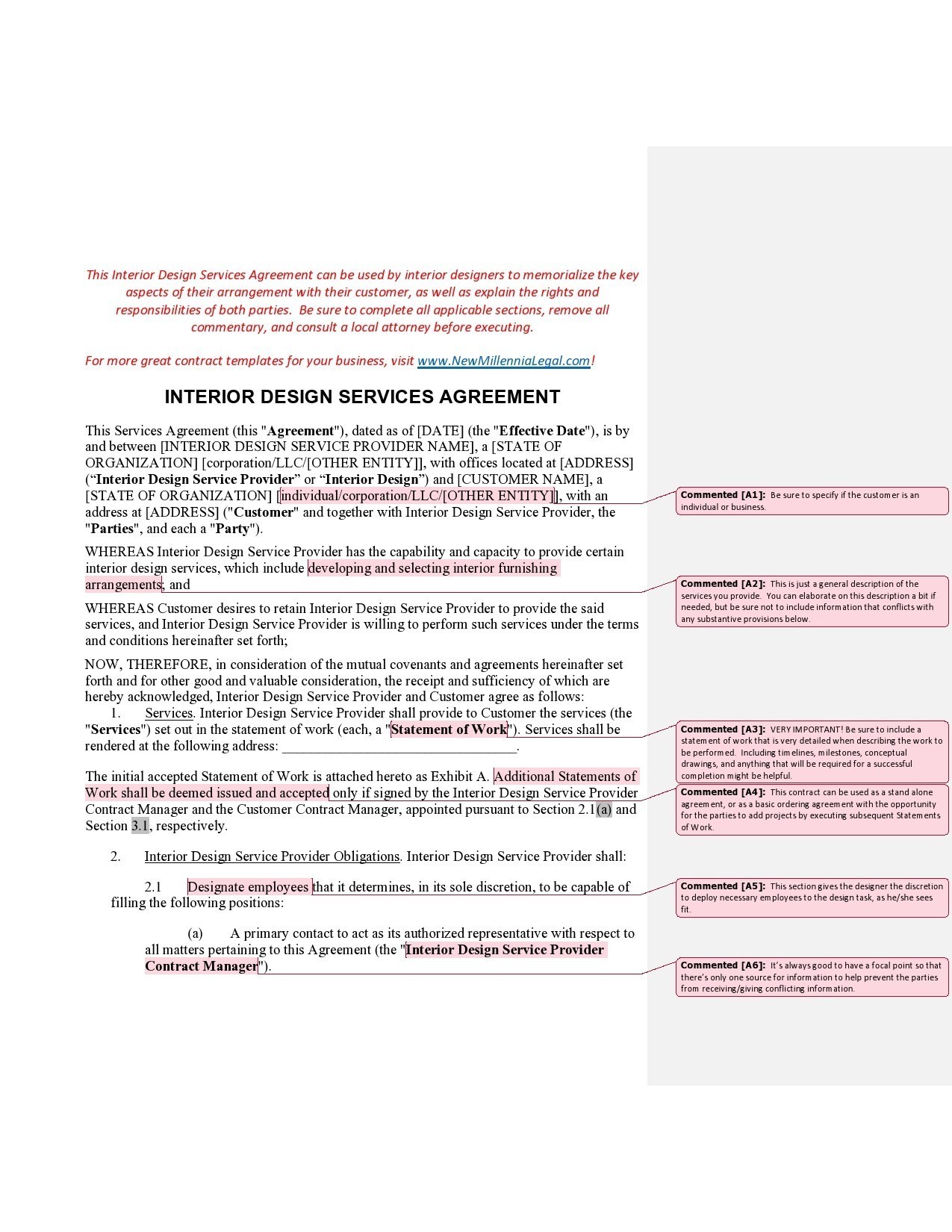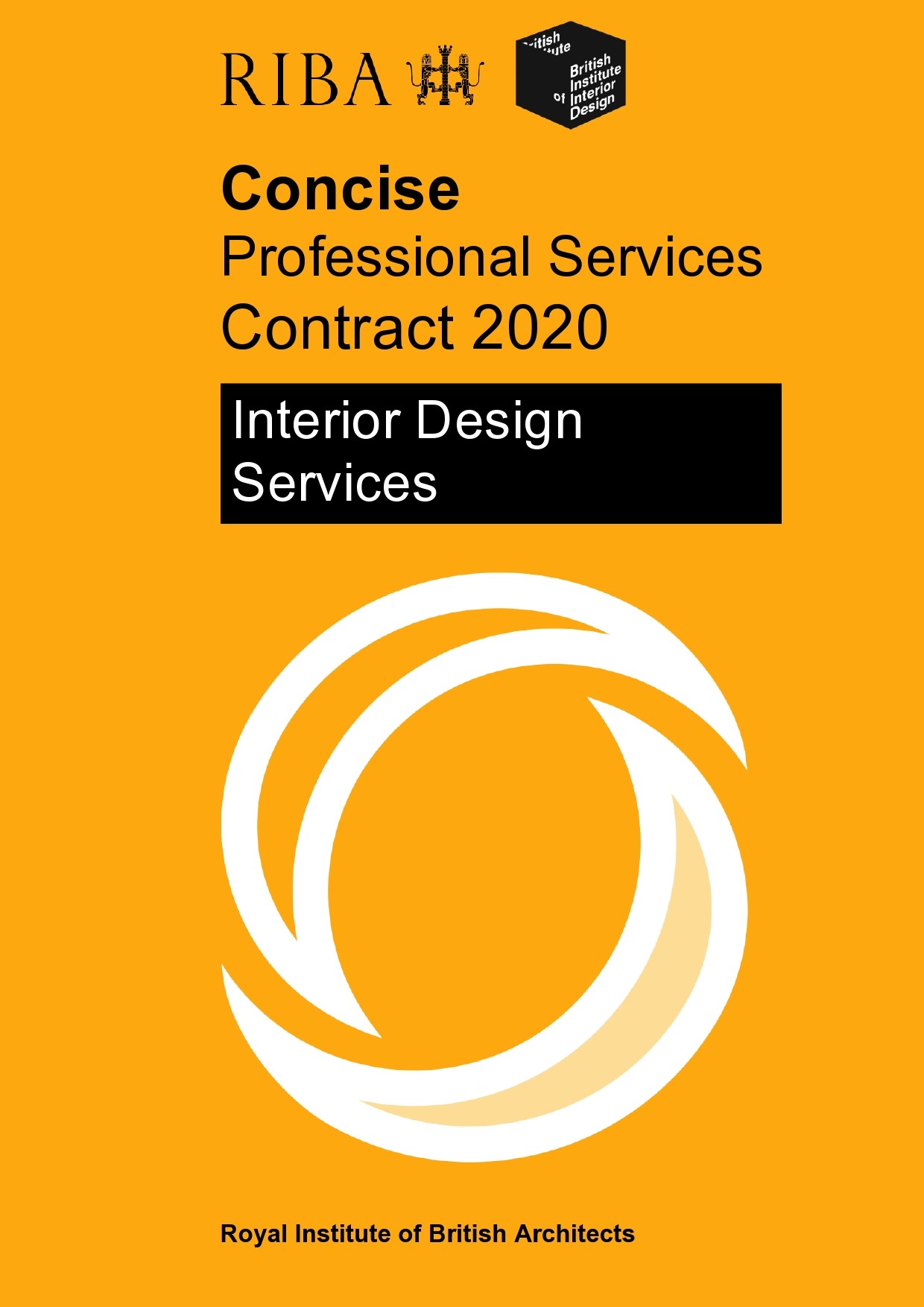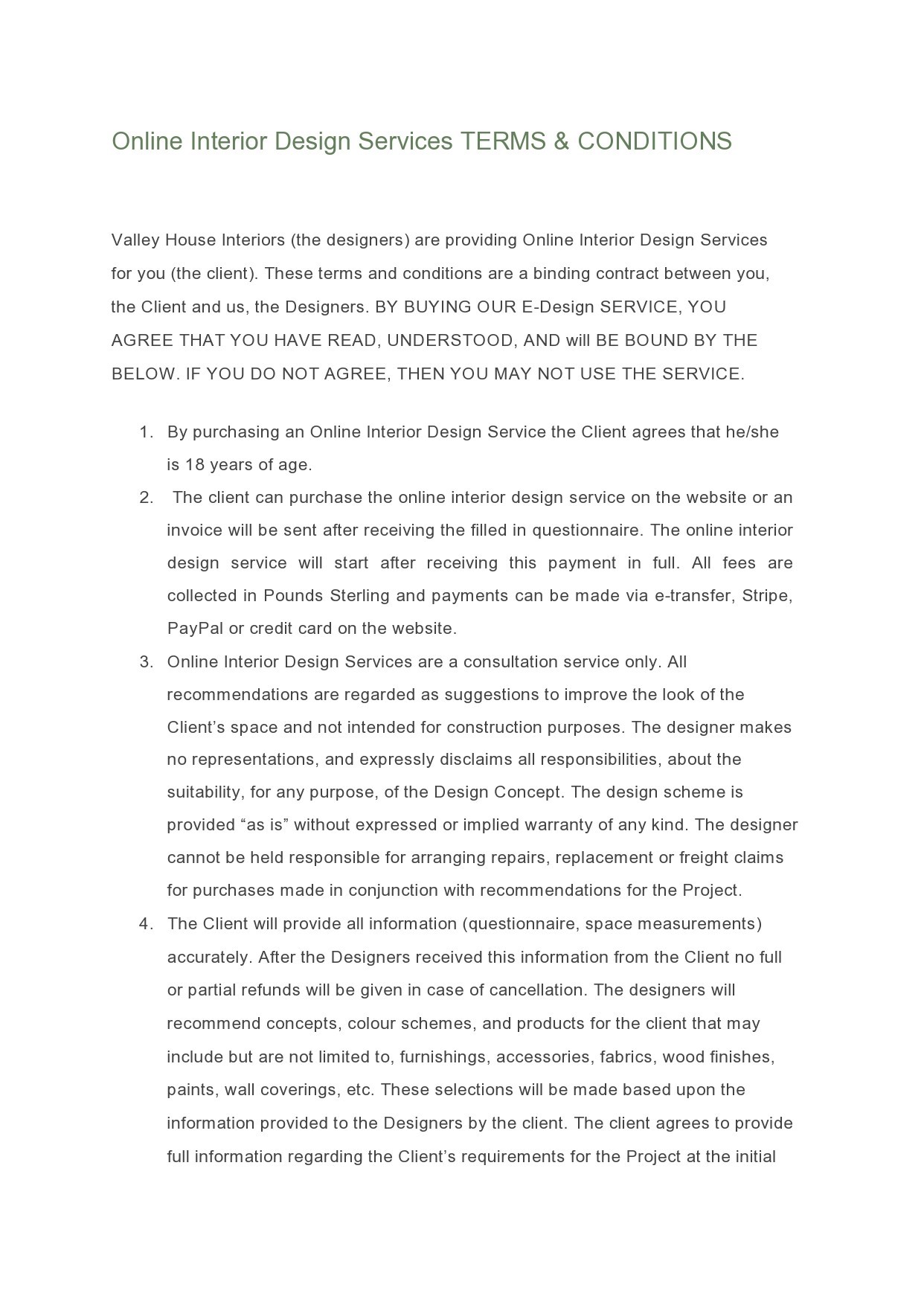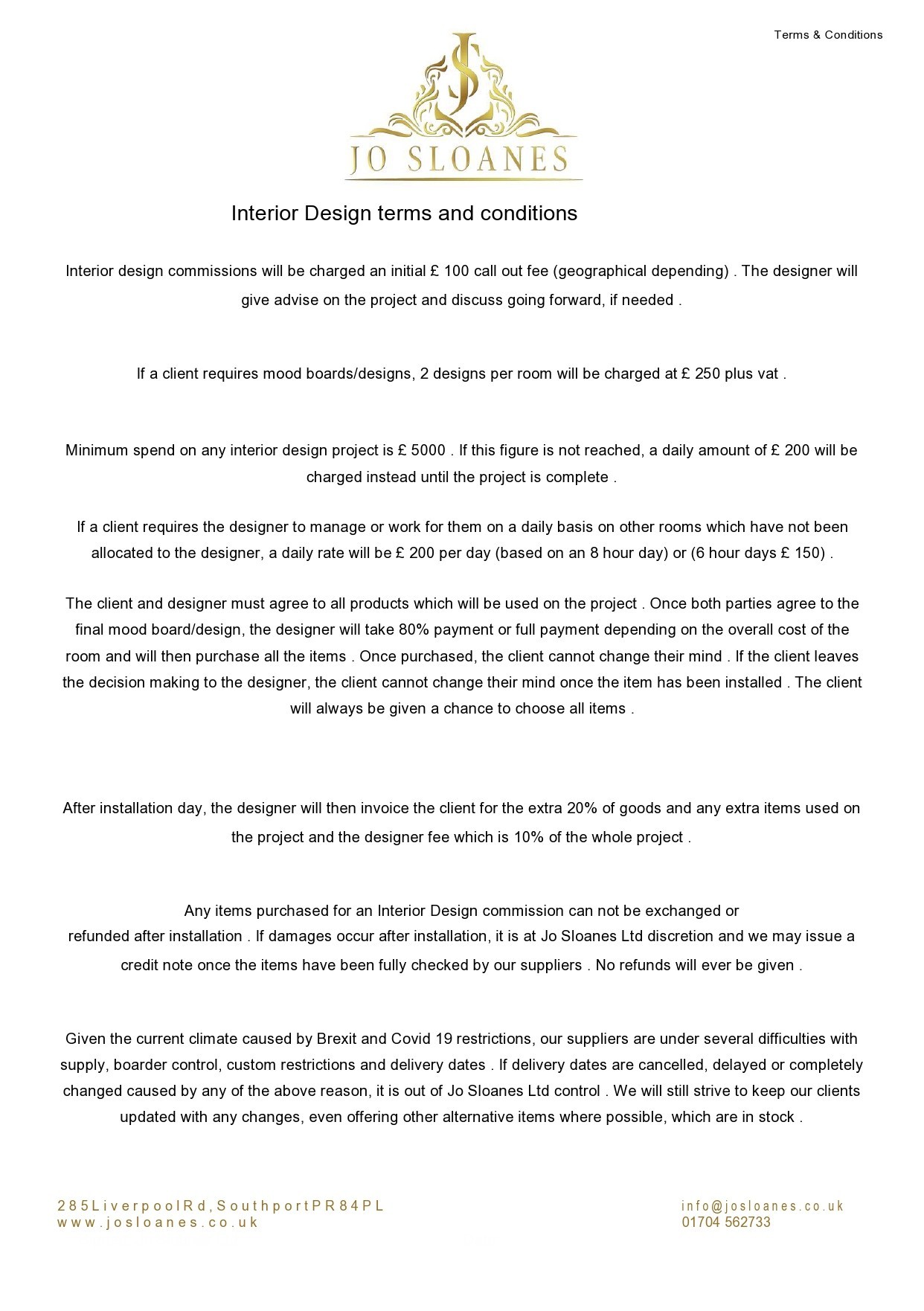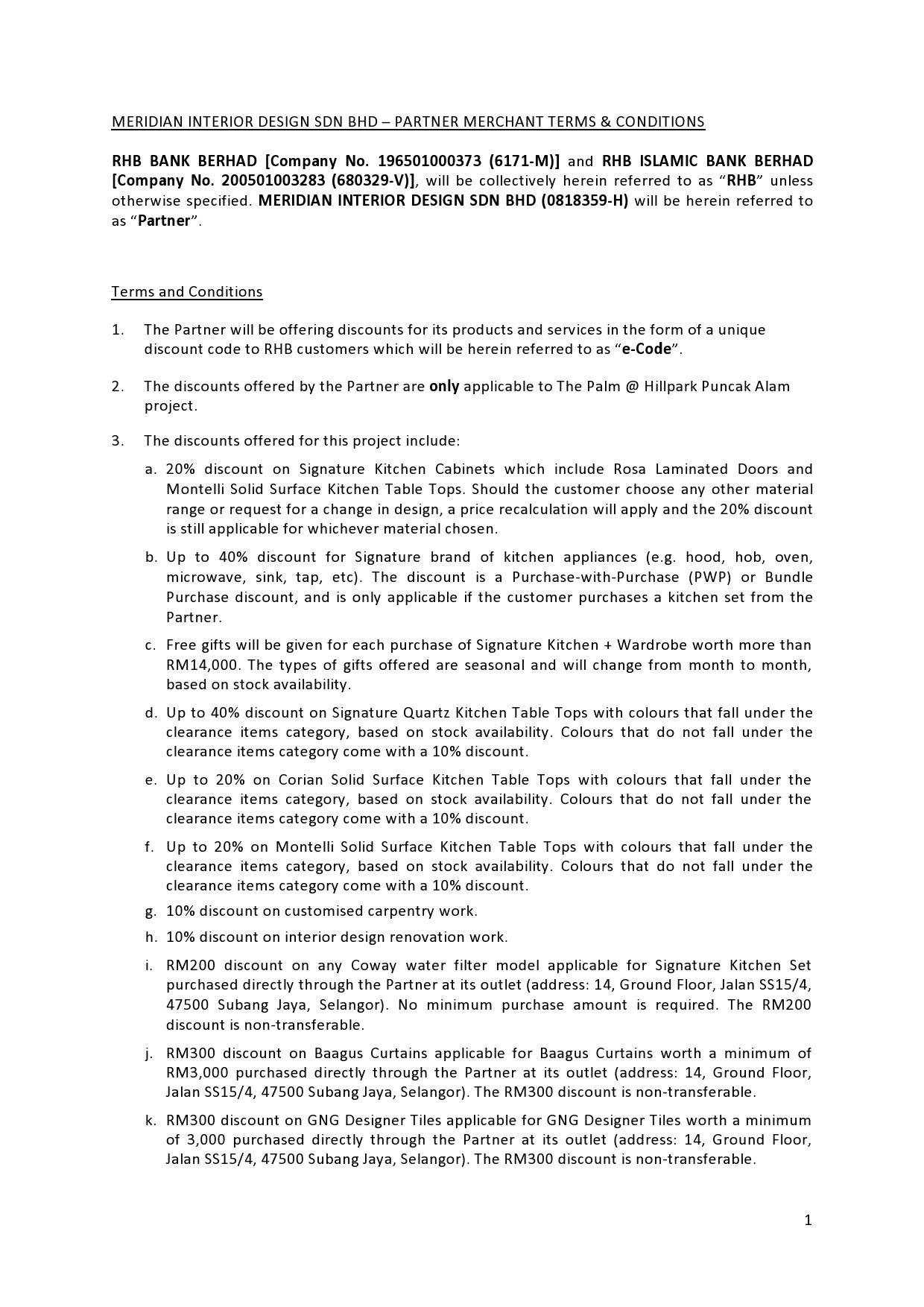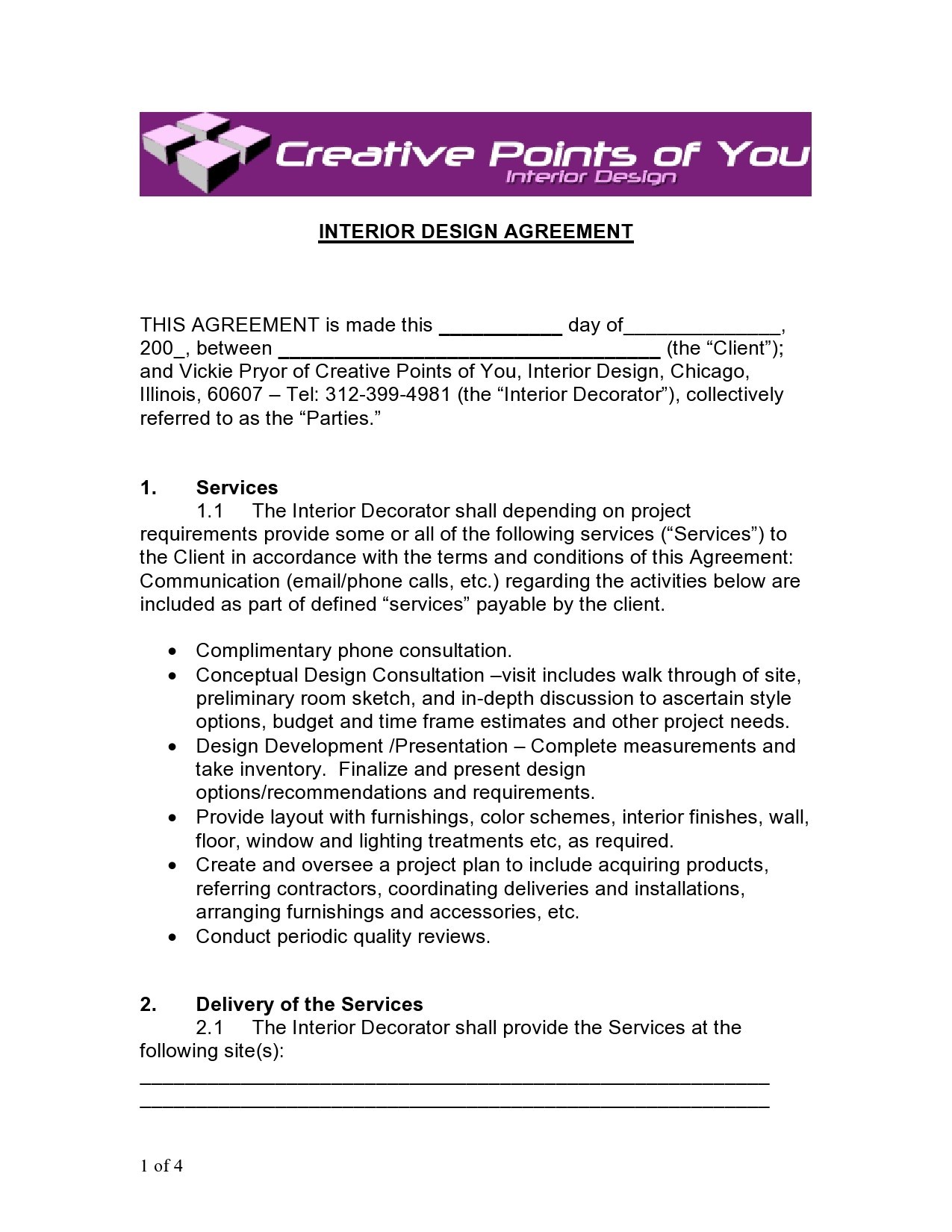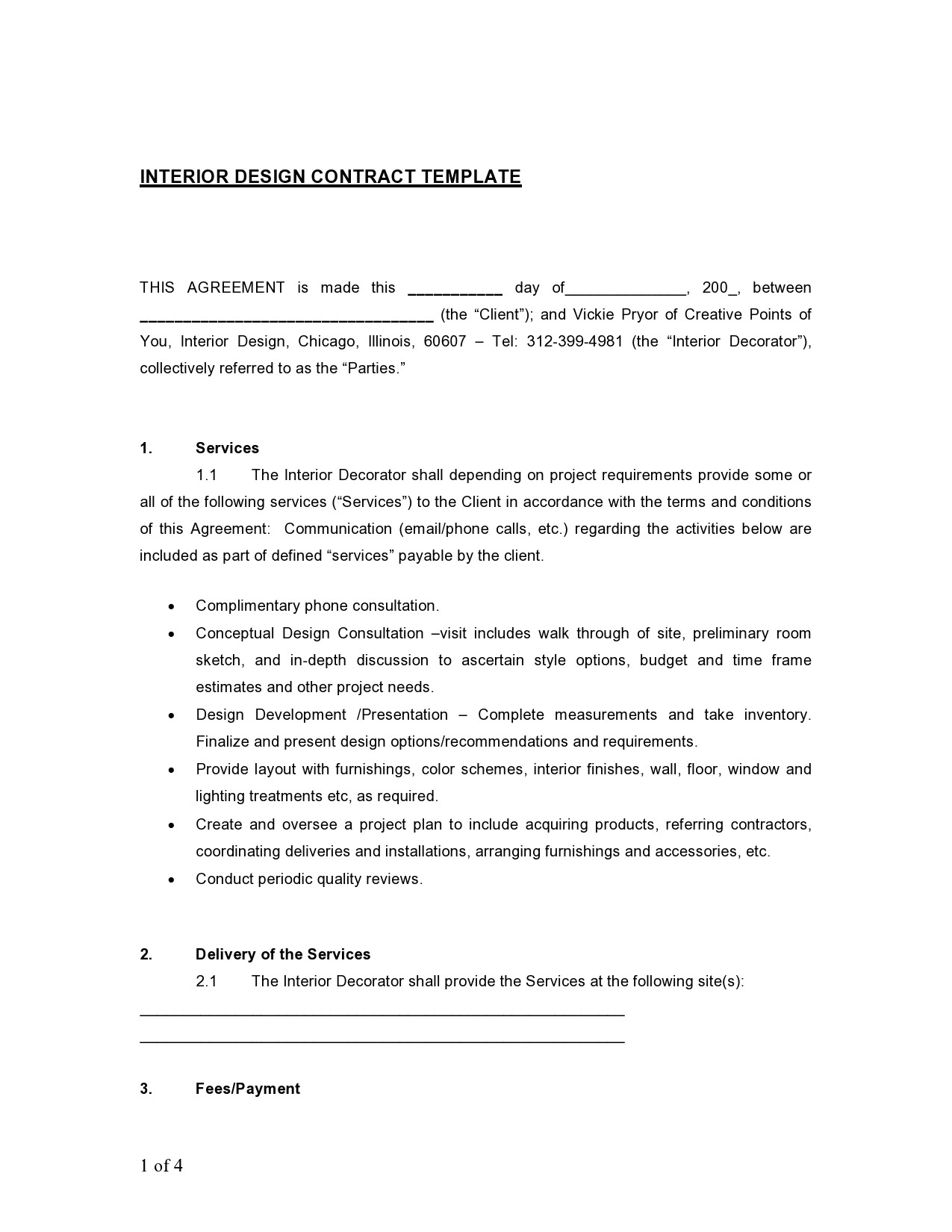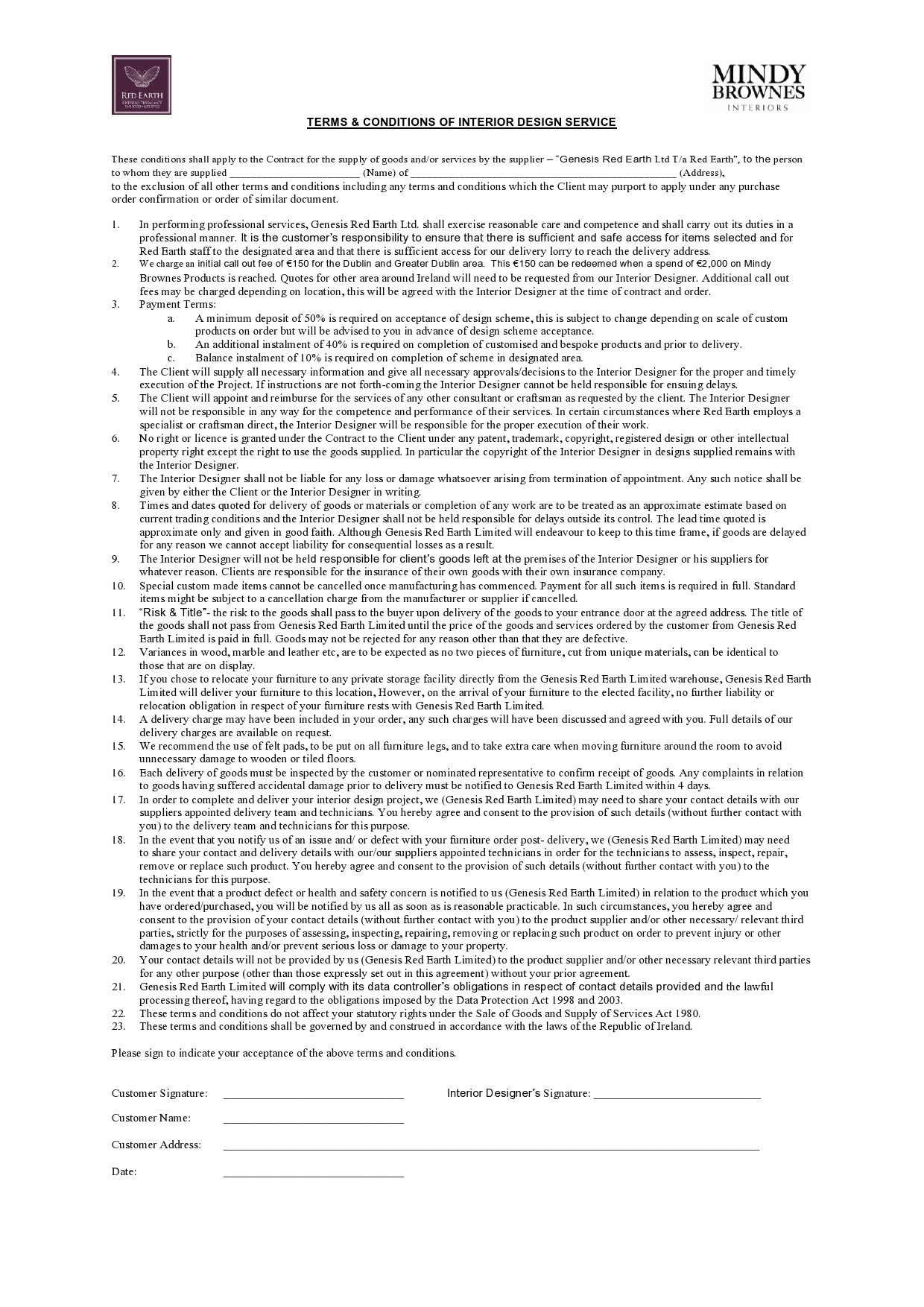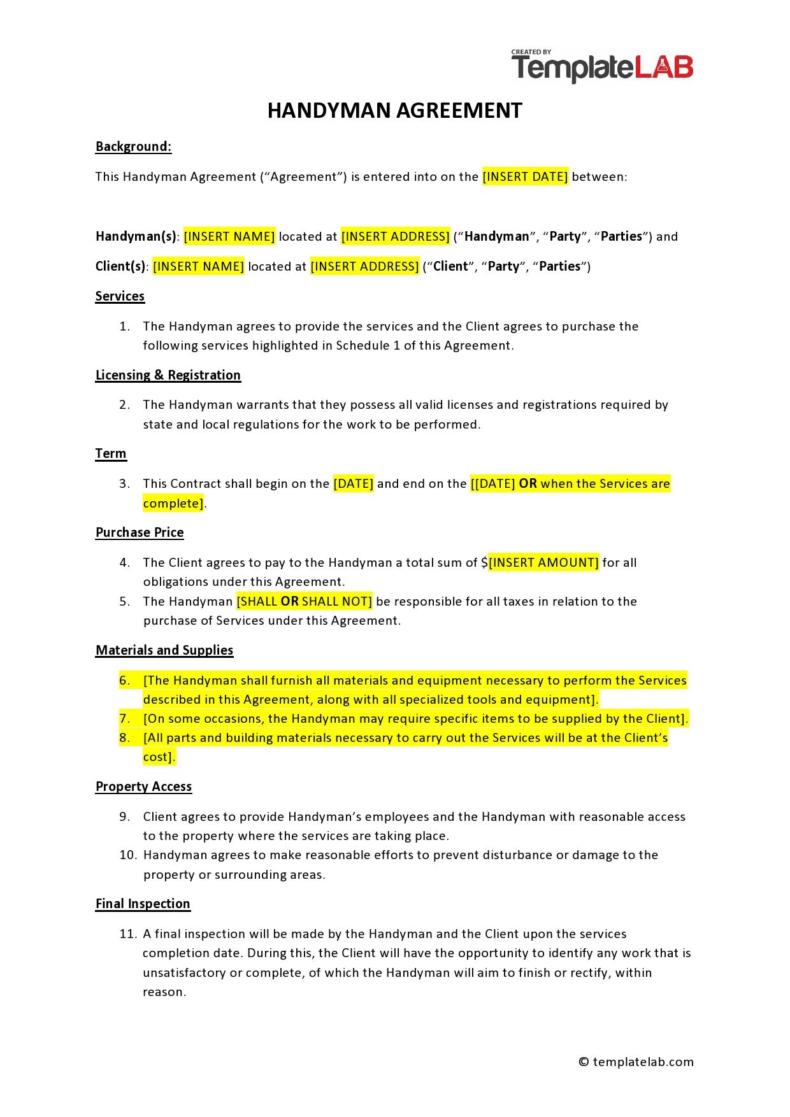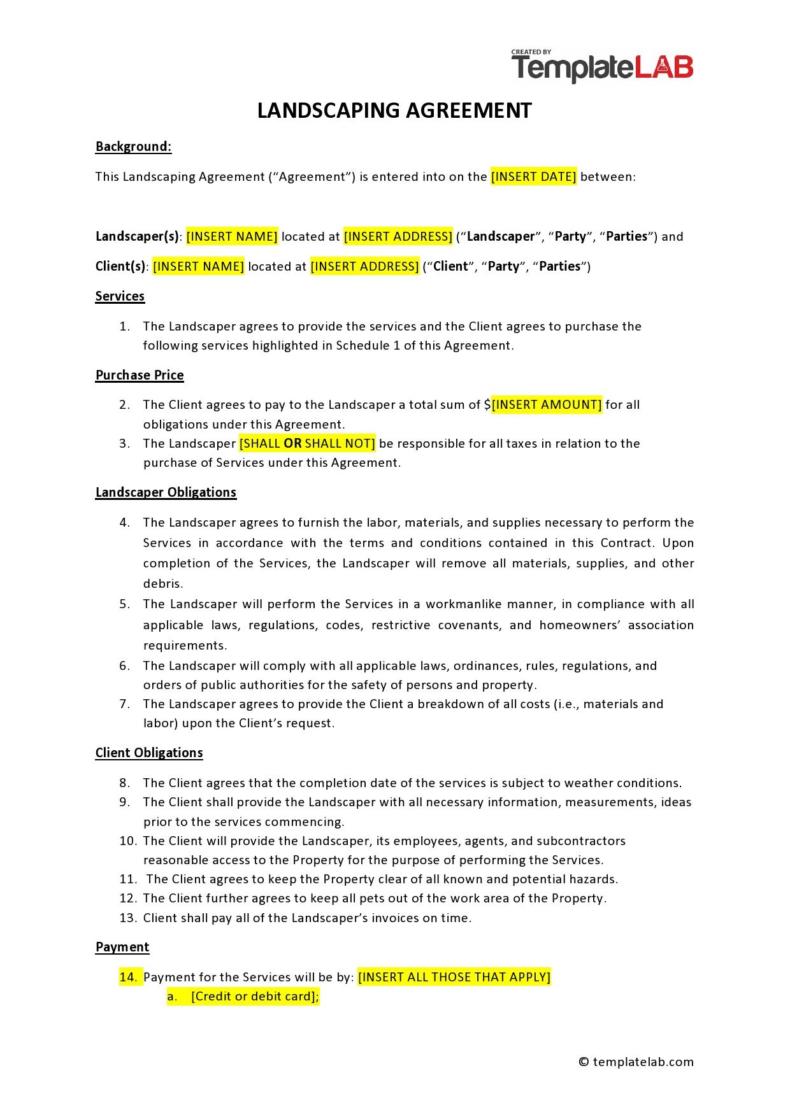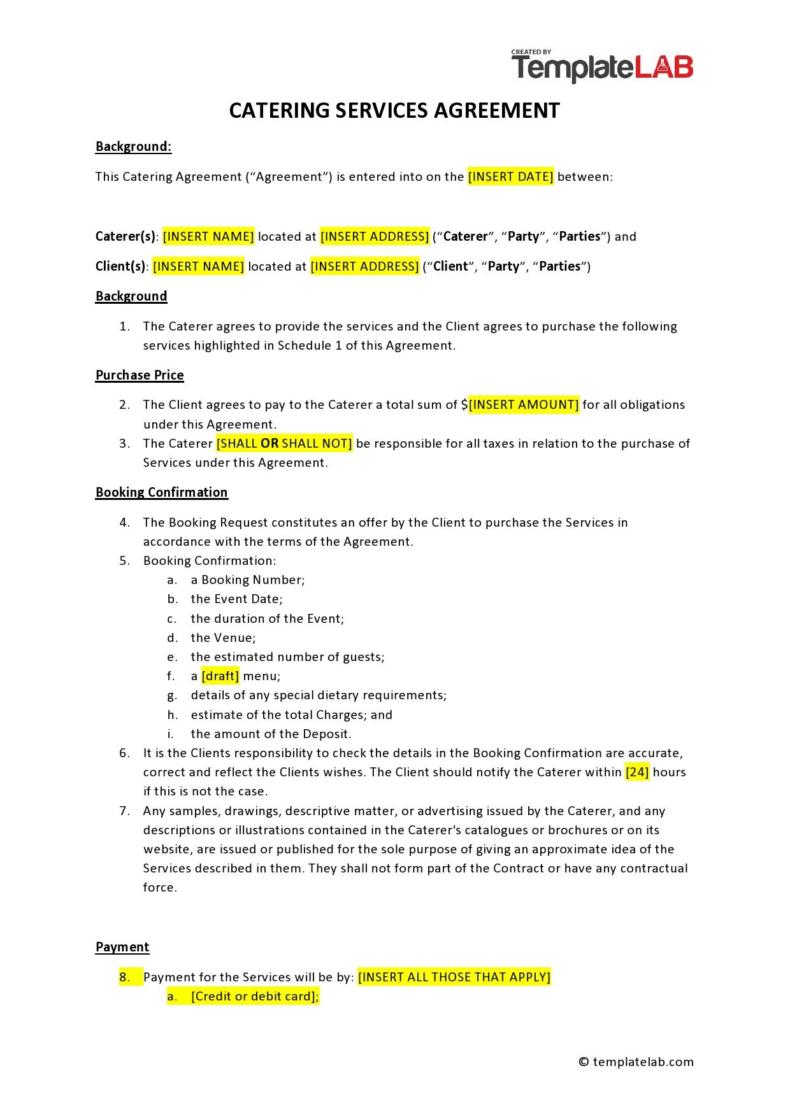Interior design enhances the health of the interior of a building. It creates an aesthetically pleasing environment for the people who use the building. An interior designer helps with selecting the best decorative items, and furniture to be used to create a functional, safe interior. They must follow the rules of the building and adhere to inspection requirements. Before an interior designer begins to work, they should make sure they sign an interior design agreement. The document protects them from incurring liabilities and can be used as a legal document in court.
Table of Contents
- 1 Interior Design Contract Templates
- 2 What is an interior design agreement?
- 3 Interior Design Contract Samples
- 4 What does an interior design agreement include?
- 5 Interior Design Agreements
- 6 Why you should sign an interior design agreement?
- 7 Things to remember when writing an interior design contract
- 8 Interior Designing Contracts
- 9 How do you write an interior design contract?
Interior Design Contract Templates
What is an interior design agreement?
An interior design letter of agreement is a document that gives details of the working relationship between an interior designer and their customer. It is a formal document that helps avoid any misunderstandings between the interior designer and the client. It contains the negotiated details of an interior design project.
Interior Design Contract Samples
What does an interior design agreement include?
An interior design letter of agreement contains a complete description of the services an interior designer will offer as follows.
Services offered
Mostly, the interior designer provides a conceptual design as per the detailed building plan. They also consult with the client and agree on the services the designer will offer. The services may include the following or more.
- Suggestions for the placement or arranging of specific or existing furniture
- Suggestions for selecting and placing new customized furniture/accessories
- How the client will coordinate with the interior designer when selecting items such as tiles, finishes, cabinets, paints, fabrics, rugs, window treatments, and accessories
- Purchase items such as sinks, tiles, tubs, faucets, accessories, lighting, hardware, carpets, rugs, etc.
- Helps with purchasing of stock items, and advice on the best places to buy
- Helps with choosing the right wall colors that match with the rest of the design like ceilings, floors, fabric, etc.
- Suggestions for the best interior design features such as bathroom fixtures, moldings, kitchen cabinets, mantels, flooring design, lighting designs, etc.
- Provision of sketches for interior designs, drapery, room layouts, etc.
Interior designer fees
The contract must provide details on how the fees will be charged. It may include the following or more details.
- Fees charged – The fees can be charged per hour or contract
- The deposit percentage payable before the contract starts
- The time within which the balance must be paid
- Fees rate per hour – For Example, $100 per hour
- What is chargeable – Example, the time taken during consultation, designing, purchasing of items, and the actual interior design
- Procedures for invoicing and payments
Custom purchases
The client and the interior designer might have agreed that the designer would purchase the items on behalf of the client and claim reimbursement. The interior design agreement should provide details of how the purchases and reimbursements should be made. It can be as follows:
- The designer makes the purchases
- They present the invoice with the receipts attached
- The client reimburses immediately
Another arrangement could be as follows:
- The interior designer makes all purchases as needed and when needed
- They keep all the receipts
- They present one invoice after completing the work together with the receipts
- The client reimburses
The reimbursements should include the following:
- cost of transport
- cost of sourcing
- cost of storing
- cost of meals while sourcing (if applicable)
- cost of lodging while sourcing (if applicable)
Delay issues
If the client is the one making the purchases, sometimes there could be delays with delivering the items after the work commences. The interior design agreement should provide information on how the client will pay for the time lost. If it is the designer who caused delays, the agreement should provide details of the penalties.
Insurance coverage
Interior design work should be insured due to damages and injuries. Ensure that the client gets insurance cover before the work commences. The insurance can cover the following and more:
- Furniture
- Moving materials
- Installations
- Material handling
- Design furnishings
- Injuries
Term of the interior designing contracts
The term is the duration within which the project must be complete. It gives details of the following:
- Project commencement date
- Project completion date
- Documents to be signed upon project completion
- Designer entitlements
- Client approvals
Liability
This section provides details for the following.
- Who is responsible for injuries?
- Property damage during the project timeframe
Photographs and designs
The client might agree that the interior design should be done according to photos provided for previous work. The agreement should not be verbal. It is important to attach the photos in any interior design contracts to show the kind of design the customer agreed to.
It is also necessary that the interior designer takes photos of the building’s interior before the work begins. They should take more photos as the project progresses and some more after completion. No photos should be taken without the client’s consent. If they agree, it should be put in writing and included in the interior design contract.
Apart from suggesting how the interior design shall be done, the client should also be provided with the actual drawings. They provide accurate information on how the building interiors shall look after completing the project.
The designs also help when budgeting for the materials. If there are any design flaws, they should be noted at this stage and corrected. The agreement should include a clause that states the drawing is the intellectual property of the designer. They should not be sold or used for any other purpose by the client.
Inputs from consultants and contractors
Sometimes the project might require input from the contractor or consultants if it goes beyond the work of an interior designer. The client should play his part and call the building contractor to come and assist. That will be a separate contract entered between the client and the contractor or consultant. These details should be highlighted in the agreement.
Reports and arbitration
The interior designer should provide the client with a detailed report on the progress of the project from time to time. They may hold periodic meetings with the designer and the building contractor when necessary. If disagreements arise, the two should agree and include the information in the interior designing contracts on how disputes shall be resolved. If they cannot agree, they should identify an arbitrator whom they will consult.
Legal fees
Whether the two parties agree to arbitration or to go to court, there will be fees incurred. They should put in writing in the interior designing contracts who will be responsible for payment of the fees.
Amendment clauses
If there is a need to amend the agreement, there should be a clause that provides details of how the amendment will be done. The two parties should first agree on whether there is a need for amendment. The amendments can be in terms of:
- Project time extension
- Project fees adjustment
- Addition of services
- Addition of items to be purchased
Project termination
If everything fails to work, there could be a need to terminate the project. Mostly, projects are terminated before they start. After starting, it becomes challenging to terminate due to the costs incurred. It might be more expensive than to proceed with the project. If there is a need to terminate, the interior design letter of agreement should provide details on how it shall be done and any penalties or fees incurred.
Interior Design Agreements
Why you should sign an interior design agreement?
An interior design agreement is not legally binding if it is not signed by both parties. Both the client and the interior designer should be involved in the entire process of writing the interior design agreement. It is okay to refer to an interior design contract sample before they begin to write. The signing of the agreement provides both parties with the following benefits:
They avoid disagreements: As the project is going on, the client might disagree with some of the designs, furnishings, or colors. If they are the ones indicated in the agreement, the interior design contract agreement shall help solve the disputes.
They give details of responsibilities and expectations: Each party shall have their part to play. They shall also have several expectations from the other party. The interior design letter of the agreement details the responsibilities of each party and expectations.
It is a legal document: The interior design letter of agreement is a legally binding document. It can be used in court if the two parties fail to agree on issues.
It can be used to obtain funding: The project might require a lot of money which the interior designer might not have. They can present the signed contract to a financing institution to obtain a loan for the project.
Things to remember when writing an interior design contract
When writing an interior design letter of agreement, there are some basic things that you should have in mind. First is the detailed information that should go into the agreement. Second are the important clauses that can easily be overlooked. The final point is the design and language contained in the agreement. The following tips will help you write a detailed agreement. You may refer to an interior design contract sample before you begin writing.
- Let it be simple. Avoid using complicated legal language when writing the agreement. Stick to simple English that each party can easily understand. Make every point clear. You may use numbers or headings to make the agreement look neat.
- Do not forget the insurance clause. Sometimes it is almost impossible to prevent accidents. A worker may slip, fall, and get injured. A brand-new cabinet may fall during installation and break. The cost of replacing it could be too high for the contractor to afford. The insurance clause protects the contractor from such incidences. The insurance should cover all the furnishings, materials, storage, installation, moving, and handling.
- Do not forget the “no price guarantee” clause. Prices in the market keep fluctuating. The cost of purchasing materials could go up or lower than the price the two parties used when calculating the cost. If prices go up suddenly by a significant margin, the interior designer could go at a loss due to the big difference. If the prices go up, the client should be ready to cover the difference. If the price goes down, the client should get the benefits. Some items might be required but they were not part of the agreement. If such a need arises, the client should cover the cost of the extra materials or furniture.
- Have a health and safety section. Most states require construction and interior design contracts to have health and safety clauses. The clause provides guidelines on the roles both the client and interior designer will take to ensure the safety and health of everyone working on the project.
- Have the document signed. The agreement must be signed, without which it will not be legally binding.
Interior Designing Contracts
How do you write an interior design contract?
Follow these steps when writing an interior design agreement. An interior design contract sample will help if you forget any details.
- Write a company introduction
- Write the statement of work: The statement of work describes the project’s scope.
- Write the purchase and warranty terms: These terms protect the person purchasing the interior design materials and furnishings.
- Detail the payment terms: The payment terms are detailed in terms of expected payment, interest, refunds, additional fees, invoicing, etc.
- Include the consultants and contractor’s clause: This clause protects the designer if the services of a contractor or consultant might be required.
- Include the clause about photography, videography, and publishing: The interior designer will take photos or videos of the interiors before work commences, during the work, and after completion. The client must first give consent.
- The intellectual property clause: This clause gives the interior designer all the rights to own all photos or videos taken during the project phase. The designer can use them for marketing purposes or to show them to other clients.
- Project termination: Write the conditions that must be fulfilled for the project to be terminated.
Disputes and resolutions: Provide details on how the dispute shall be resolved. Disputes may arise, but the information in the interior design letter of agreement will help both parties resolve them.

